- Skip to main content
- Keyboard shortcuts for audio player

Radio Expeditions
Up close and personal with the albatross.
Alex Chadwick

Nature photographer Frans Lanting with a wandering albatross on South Georgia Island in the South Atlantic Ocean. Frans Lanting hide caption
Nature photographer Frans Lanting with a wandering albatross on South Georgia Island in the South Atlantic Ocean.

Writer Carl Safina with a pair of seabirds, who've, no doubt, logged tens of thousands of flight miles. Blue Ocean Institute hide caption
Writer Carl Safina with a pair of seabirds, who've, no doubt, logged tens of thousands of flight miles.
What we know about albatrosses, we largely know from literature -- perhaps most famously from Samuel Taylor Coleridge's 1798 poem The Rime of the Ancient Mariner. The albatross was considered an omen of good luck to sailors, and yet the mariner shoots one. The senseless killing brings a deadly curse upon his ship, and as a punishment, he is forced to wear the dead albatross around his neck, forever a supernatural reminder of his trespass.
Nature photographer Frans Lanting has a more lighthearted view of albatrosses. He sees the huge seabirds as the planet's "ultimate frequent flyers."
"These birds don't flap their wings, they use wind energy," Lanting says. "It costs them almost no energy to get around, and they fly phenomenal distances. An average black-browed albatross may cover 100 miles a day during its lifespan of more than 40 years."
Over a lifetime, an albatross may cover 1.5 million miles.
Lanting, along with writer Carl Safina, is currently immersed in the world's second-largest albatross breeding ground in the Falkland Islands, some 300 miles off the Atlantic coast of South America. The birds, which have wing spans of up to seven feet, can be found all over the world. But they shun the chaos of continents when it comes to breeding.
"Albatrosses just do not seem to like land very much. They come to land only if it involves sex," says Safina, author of Eye of the Albatross .
More than 170,000 breeding pairs of black-browed albatrosses are believed to nest on the Falklands' Steeple Jason Island, all with very individual lives, says Lanting.
"Every bird has its own story," says Lanting. "I can see adults coming back from the sea and working their way into the colony to meet up with their partners. I see younger birds that are looking for mates, trying to establish nest sites of their own. It's a society, a society of seabirds."
Lanting and Safina are studying what albatrosses do, both out in the huge ocean and in their breeding-ground societies -- with an eye on albatross survival. Nineteen albatross species are in decline, mostly due to commercial fishing vessels that use long lines that hook and drown the birds the birds.
For some species, Safina is optimistic about their survival.
"We have time, and we have the technology already to tackle that problem if we choose to," he says.
But other species, such as the wandering albatross, are near catastrophic lows.
"For some of them, time is of the essence, or else we'll lose something that is extremely special and that we won't be able to get back again," Safina says.
Related NPR Stories
The hidden language of insects, the savage, beautiful world of army ants, saving sumatra's wild orangutans, web resources.
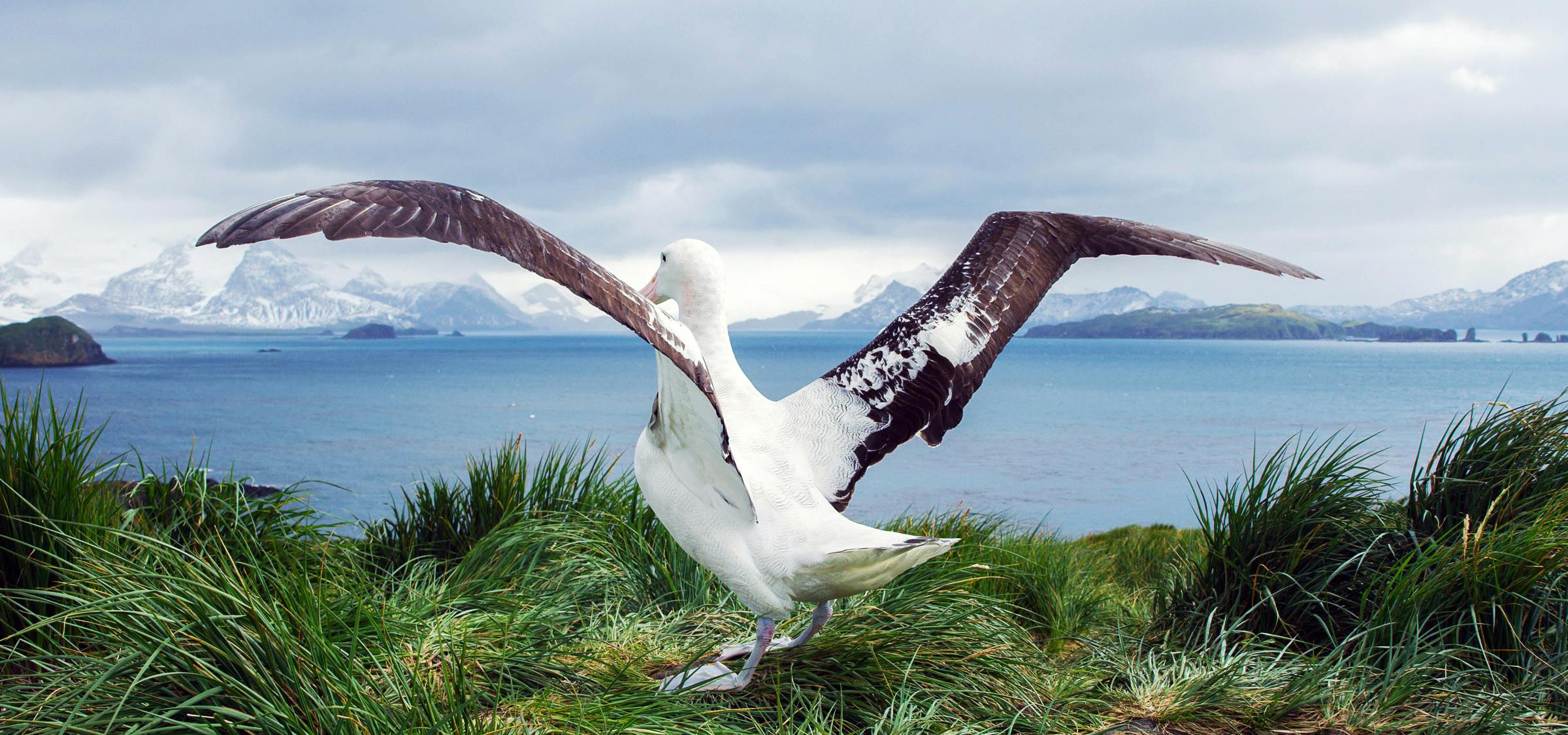
Behind the Lens: Eye-to-Eye with an Albatross
- Photography
“It’s virtually impossible to appreciate the enormity of a Wandering Albatross’s wingspan until you see it in person, up-close.”
On his first-ever trip to South Georgia, Benn Berkeley —a talented Expedition Filmmaker and one of Silversea’s Onboard Photographers—came eye-to-eye with the proud owner of the animal kingdom’s largest wingspan. The curious animal seemed drawn to the lens, approaching Berkeley of its own accord. This unique moment, experienced in South Georgia’s remote Prion Island, ranks among the most memorable in Berkeley’s career.
“I’d heard lots of stories from other photographers, Expedition Team members and some of Silversea’s guests who said the abundance of wildlife on South Georgia was unlike anything else on the planet. Above all else, I was drawn into their stories of the Wandering Albatross.” Benn Berkeley, Expedition Filmmaker and Onboard Photographer
Venturing South: “It was my first-ever time to the Sub-Antarctic,” begins Berkeley. “South Georgia had been on my list of dream destinations for about 15 years, so it was a long time coming. I used to work as a mountain guide so I was very interested to learn more about historical expeditions to Antarctica, like those of Amundsen, Scott and Shackleton, and retrace their steps. Crossing the Drake Passage to follow in their footsteps seemed to bring the history to life, but I was most interested in the region’s nature and I was eager to photograph the animals. I’d heard lots of stories from other photographers, Expedition Team members and some of Silversea’s guests who said the abundance of wildlife on South Georgia was unlike anything else on the planet. Above all else, I was drawn into their stories of the Wandering Albatross.”
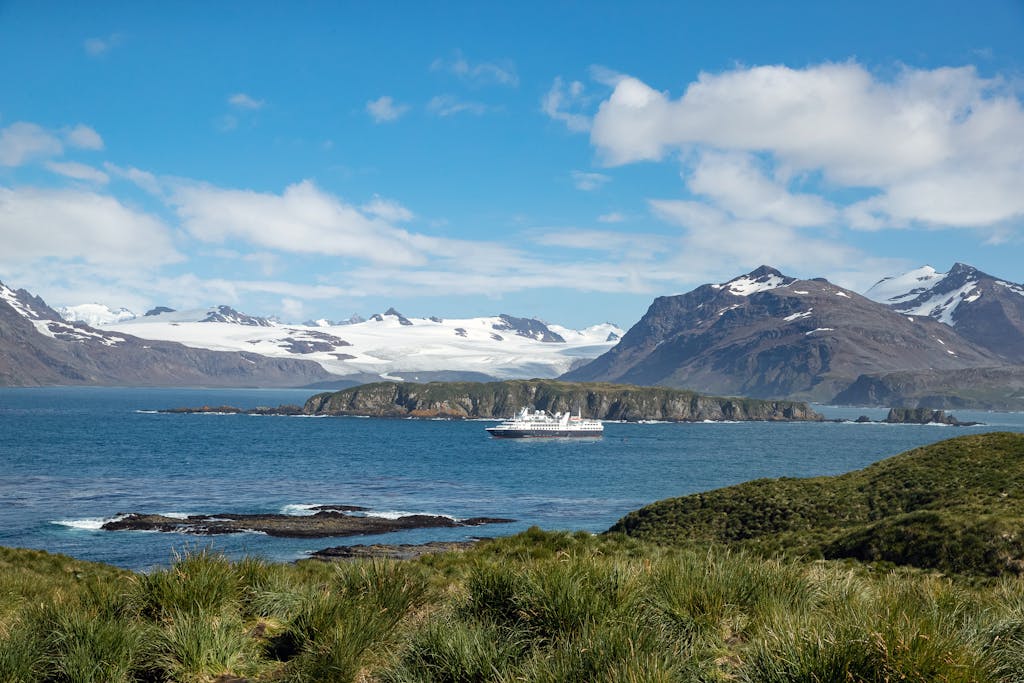
“Departing Ushuaia, we were accompanied by albatrosses as we crossed the Drake Passage at the start of the voyage; they flew alongside Silver Explorer , which was incredible to see. I was immediately struck by their huge size. I had already pinpointed Prion Island as a destination within South Georgia that I wanted to visit because I knew it was a prime nesting site for the birds and a popular breeding ground,” continued Berkeley.
A Game of Chance: “As with all wildlife photography, there was no guarantee that I would manage to get high-quality video footage of the Wandering Albatross. It was very much dependent on the behavior of the birds on a given day. Generally speaking, filmmakers and photographers have to work hard to even catch a glimpse of the animal’s 3.5m wingspan. As I’ll explain, my experience was far from ordinary!”
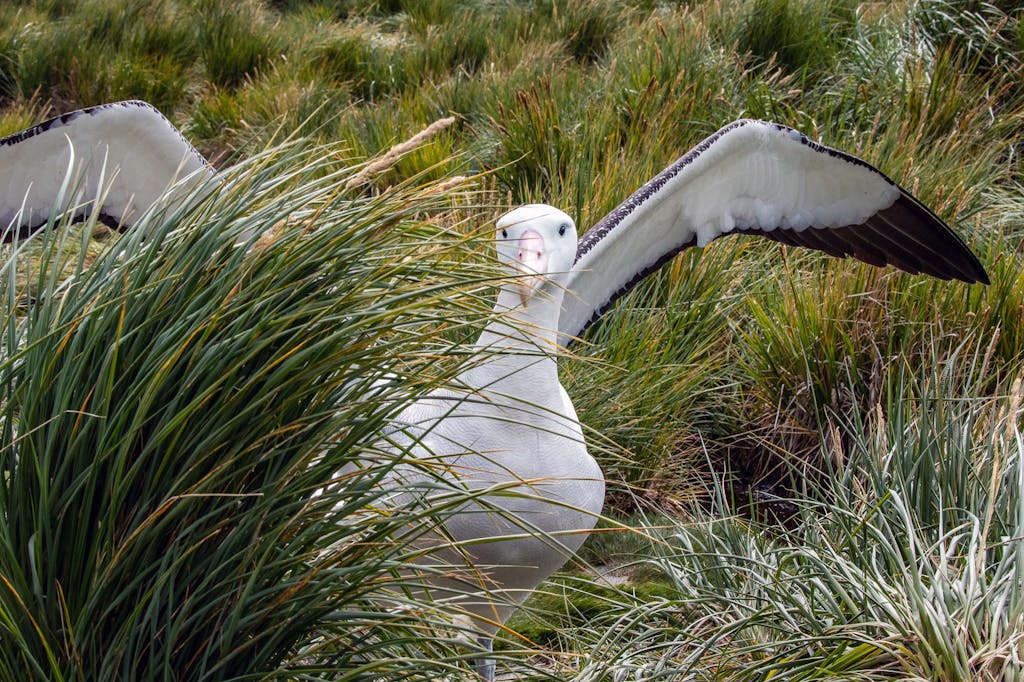
“I was fortunate enough to visit Prion Island twice, on two separate voyages with Silversea. One of the first things you notice about the island itself is that it teems with fur seals, who laze on the beach and nestle in the tall tussock grass behind. Visitors are restricted to designated paths to protect the animals and a wooden boardwalk leads to two viewing platforms.
My first time on the island was amazing—I scurried as quickly as possible to the upper platform, from where, about 30m away, I saw Wandering Albatrosses at their nesting site for the first time in my life, amid a spectacular vista of mountains and water. They were without threat and at peace. It was such an exhilarating feeling. But the second time was a very special moment, indeed.”
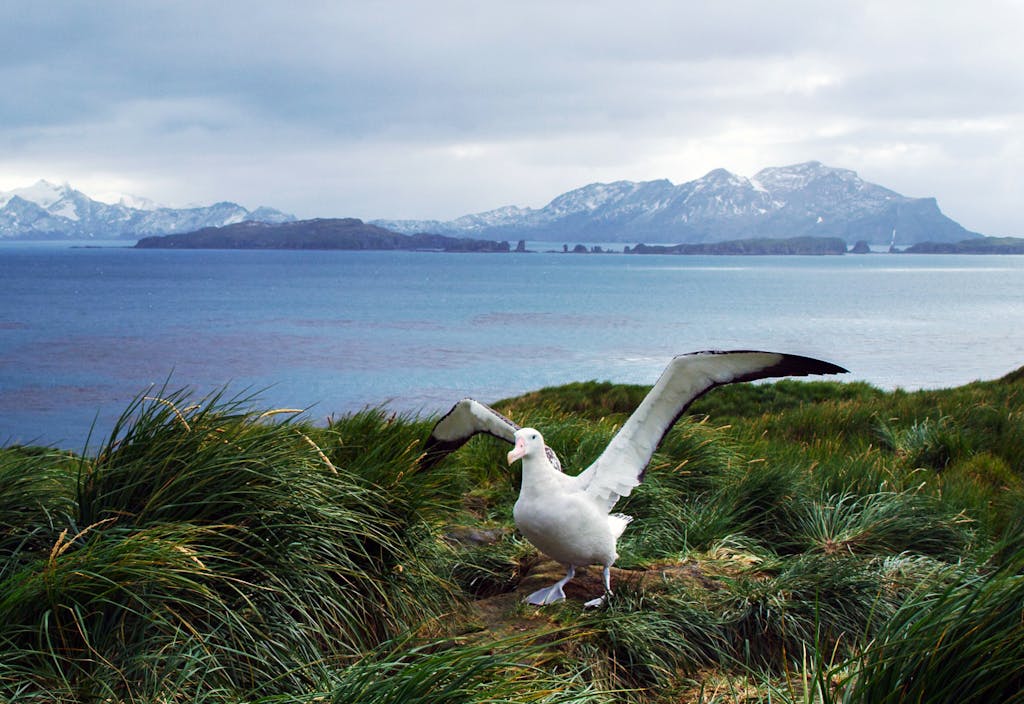
Seizing Opportunity: “As a filmmaker, I’m very fortunate to be able to join the shore party, disembarking the Zodiacs before virtually anybody else. This means I can essentially film a destination entirely alone and I don’t have to worry about getting in anybody’s way. I knew I had roughly 15 minutes to capture the footage I wanted. On this particular day, the weather conditions were perfect: it was slightly overcast and reasonably calm, but most importantly, there was a strong enough breeze for the birds to take off, which is essential when filming. I was prepared.”
I needed to rush up the boardwalk, set up my equipment, and pray for movement. After landing the Zodiac’s on the beach, though, nature was against me: fur seals, although spectacular and fascinating in their own right, were not my desired subject on the day and they blocked my access to the viewing platform. I had to be patient.”
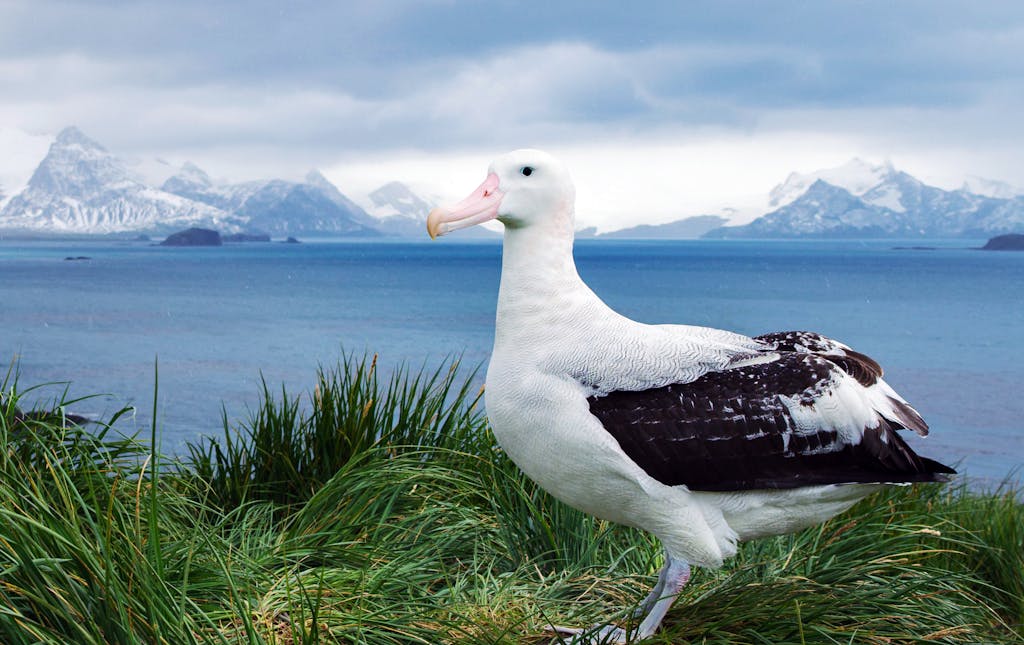
A moment to cherish: “After what seemed like hours, the walkway finally cleared and I was able to pass without disturbing the seals. From the first platform, there’s an amazing view that looks out over the tussock grass and an expanse of water towards the snow-capped mountains of South Georgia. It’s beautiful.
You never know where the albatrosses will be exactly: they could either be right next to the platform or far away among the grass, out of sight. When I reached the platform on this particular day, I saw two enormous birds performing the mating ritual about 15m from me, their huge wings spread out wide in an act of courtship. I couldn’t believe it; it was a very special moment that I just had to capture on film.
I scrambled to set up my tripod and attach my long lens to my camera, before hitting record to capture great footage of the albatrosses’ mating ritual. I couldn’t believe it. But then, only 3-5 minutes later, one of the mating pair slowly approached me with its wings fully extended, until just two meters away. Unbelievable! The bird was so close that my 100-400mm zoom lens was ineffective. It was too close to focus. This moment never usually happens. I had to act fast.
Changing a lens on my camera takes a couple of minutes. Not only do you have to switch everything off, find the right equipment and change the lens over, but there is also a 24-second delay from starting the camera to being able to record. As my camera takes what seems like an age to ready itself, the wind gusts under the enormous wings of the albatross just two meters from me. That was the longest 24 seconds of my life!
In the moment, I needed to be calm. The Wandering Albatross looked directly at me before turning around into this amazing backdrop and opening its wings fully. It was as if the bird was performing for me. Everything came together. The scene was set and I was ready. I just let the camera film and focused on the framing. I was free to enjoy the moment, which I’ve come to appreciate above all else when filming these kinds of unique encounters with Mother Nature.”
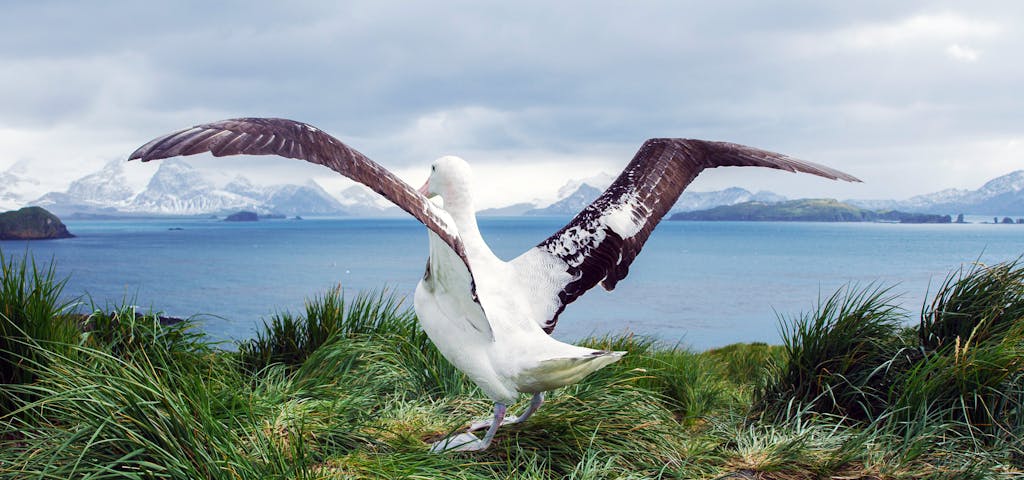
“When I showed the Wandering Albatross video footage to our Ornithologist back on board Silver Explorer , he couldn’t believe it. Our guests were in awe too—some even shed tears when they saw it in the end-of-voyage highlight film! But this encounter was just one extraordinary moment in a series of unforgettable experiences on this particular voyage.
Overcoming challenges: “I don’t consider myself to be a wildlife filmmaker. I sometimes struggle to contain my excitement when filming animals, which means that I start shaking as adrenaline takes over. I can’t contain myself. Luckily, my 24-70mm lens minimizes movement.
When I work for the likes of the BBC, I might spend a week at a time in a hide to capture a shot. There, it’s more about building up behavioral shots to form a sequence. In this instance, my time was limited and so the odds were against me. This was a more authentic moment that happened by chance. It’s unlikely that I’ll ever experience anything like it again. Nevertheless, the wildlife on South Georgia is so abundant that you’re sure to witness many unique moments.
I consider myself to be a bit of a perfectionist. I’m always thinking of ways to make my shots even stronger—in this instance, the wings could have been extended slightly more and the body could have been straighter. All things considered, though, this moment was nothing short of perfect to me.”
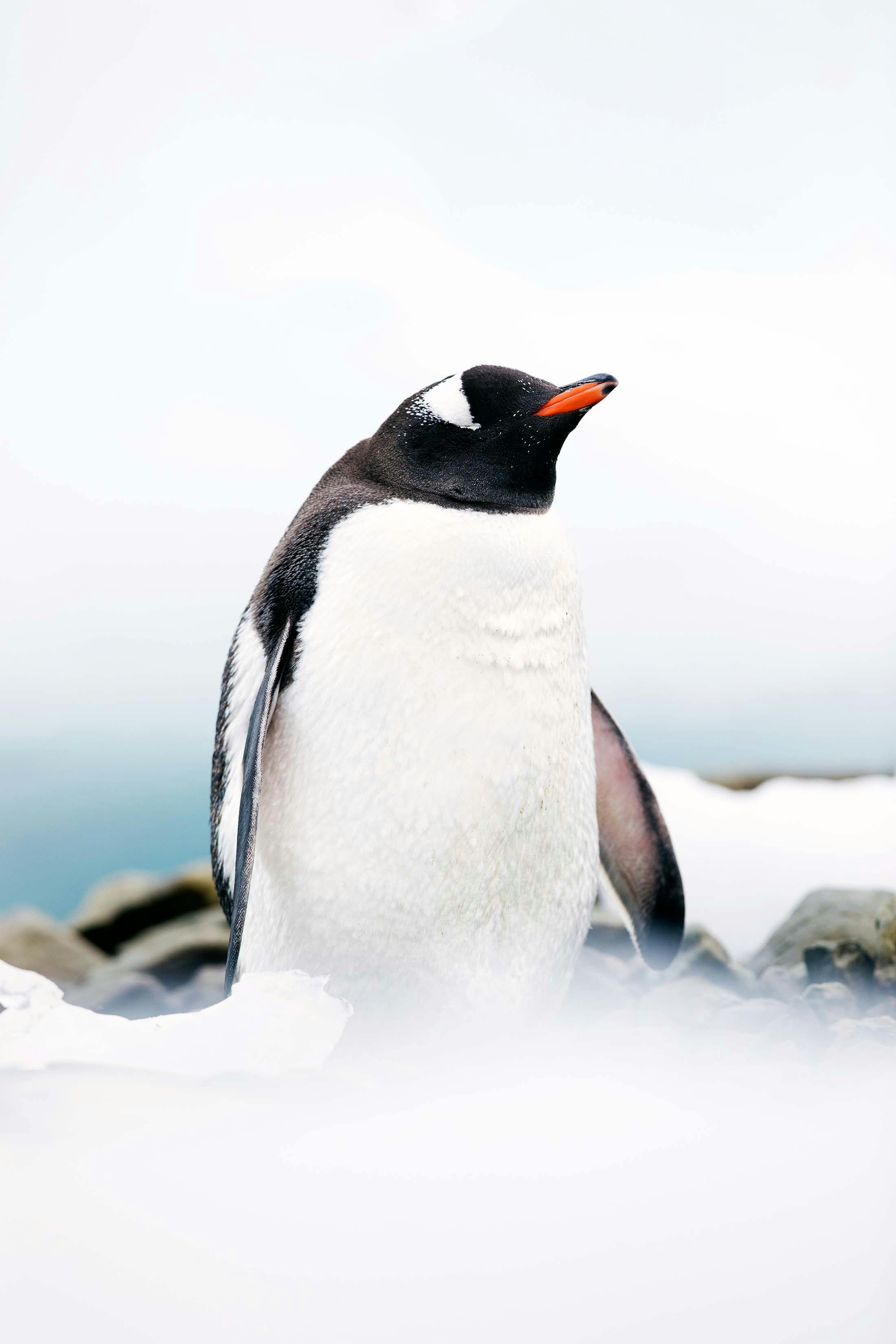
Antarctica Cruises
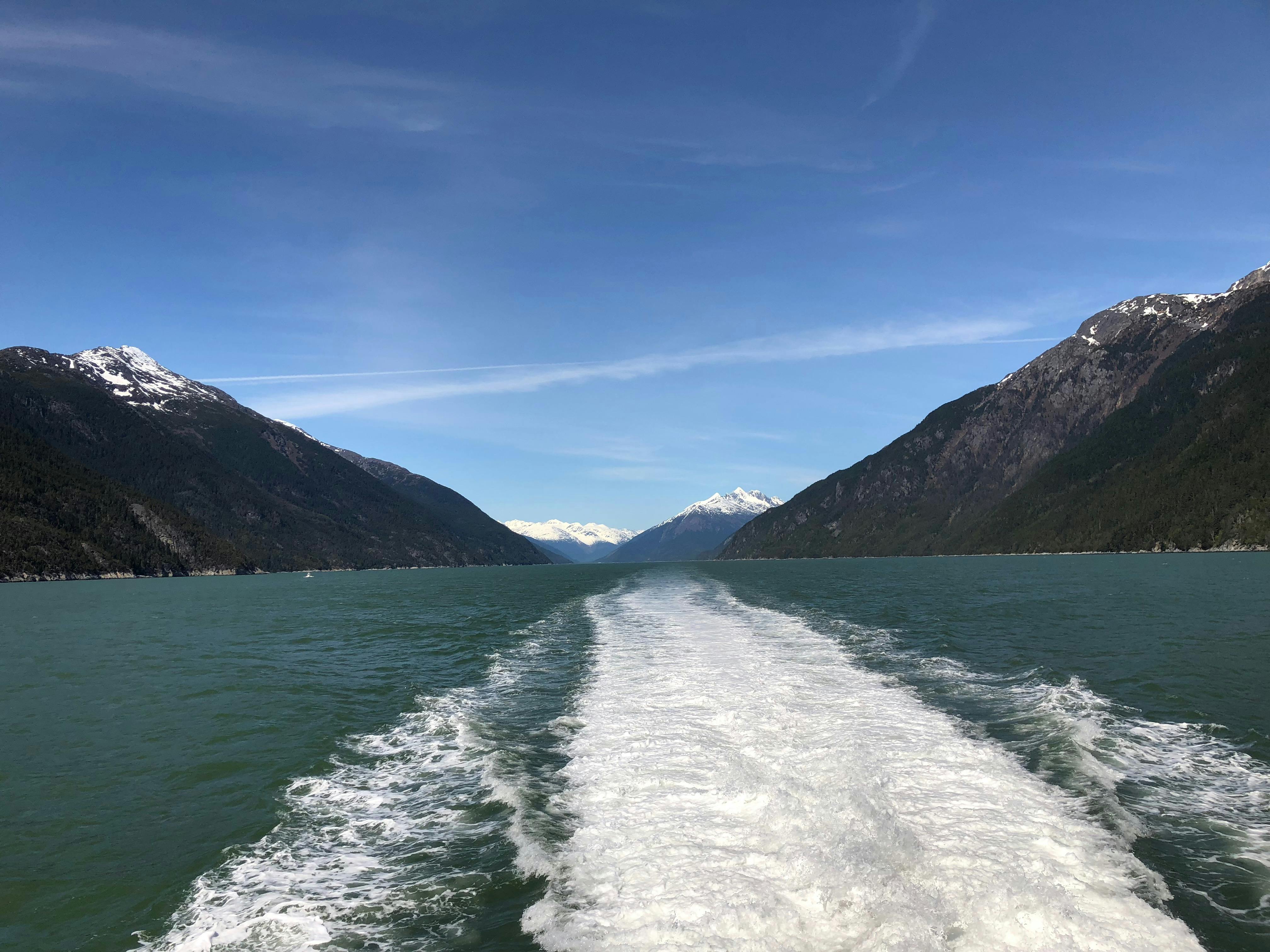
How to Choose Your Cruise: Alaska
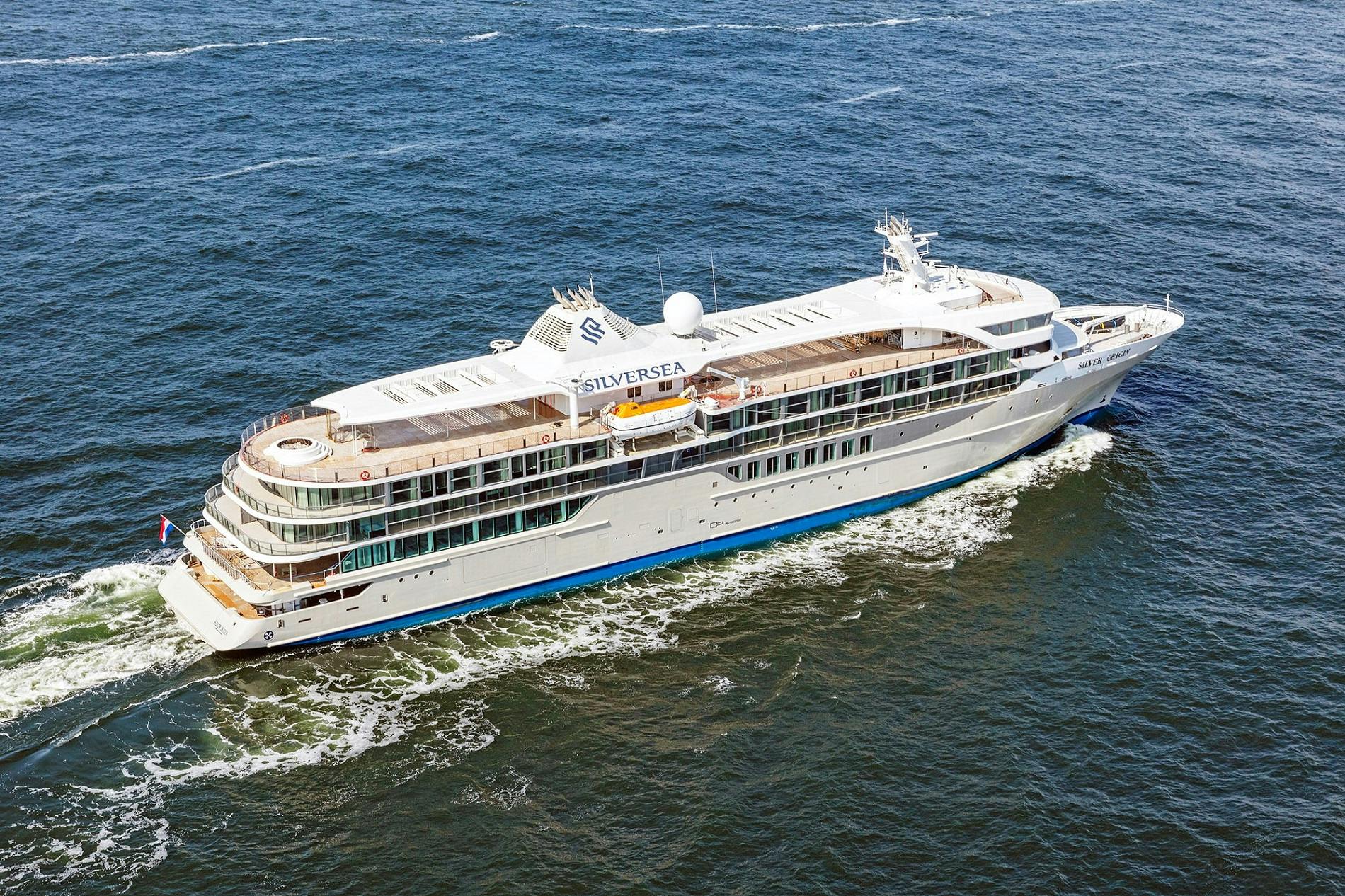
Building Silver Origin while Overcoming an Act of God
Never miss our stories: subscribe to our newsletter.

Woods Hole, Mass. — Wandering albatrosses, which are an iconic sight in the Southern Ocean, are highly adapted to long-distance soaring flight. Their wingspan of up to 11 feet is the largest known of any living bird, and yet wandering albatrosses fly while hardly flapping their wings. Instead, they depend on dynamic soaring—which exploits wind shear near the ocean surface to gain energy—in addition to updrafts and turbulence.
Now researchers, including Philip Richardson , a senior scientist emeritus in Physical Oceanography Department at the Woods Hole Oceanographic Institution (WHOI), are unlocking more clues about exactly how wandering albatrosses are such amazing flyers.
In a new paper analyzing GPS tracks of wandering albatrosses, researchers have found that the birds’ airspeed increases with wind speed up to a maximum airspeed of 20 meters per second (m/s; 45 mph). Researchers developed a model of dynamic soaring, which predicts that the birds could fly much faster than 20 m/s. The paper concludes that the birds limit their airspeed by adjusting the turns in their trajectories to be around 60°, and that in low winds the birds exploit updrafts over waves to supplement dynamic soaring.
“We hypothesize that wandering albatrosses limit their maximum across-wind airspeeds to ~ 20 m/s in higher wind speeds (and greater wind turbulence), probably to keep the aerodynamic force on their wings during dynamic soaring well below the mechanically-tolerable limits of wing strength,” according to the paper, “Observations and Models of Across-wind Flight Speed of the Wandering Albatross,” published in the journal Royal Society Open Science .
The paper adds that, given the complex field of wind waves and swell waves often present in the Southern Ocean, “it is also possible that birds find it increasingly difficult to coordinate dynamic soaring maneuvers at faster speeds.”
Regarding low flight speeds by albatrosses, the paper notes that a theoretical model predicted that the minimum wind speed necessary to support dynamic soaring is greater than 3 m/s. “Despite this, tracked albatrosses were observed in flight at wind speeds as low as 2 m/s. We hypothesize at these very low wind speeds, wandering albatrosses fly by obtaining additional energy from updrafts over water waves,” according to the paper.
“We tried to figure out how these birds are using the winds to go long distances—without overstressing their wings—for foraging for food and returning to feed their chicks. To do that, we modeled dynamic soaring and what different turn angles would do to stress on the birds’ wings and speed over the water,” said journal paper co-author Richardson. A dynamic soaring trajectory is an s-shaped maneuver consisting of a series of connected turns, he noted.
“This research is a step in the direction of understanding how wandering albatrosses are able to do these foraging trips and maintain a fairly large population. These birds figured out an amazing way to use the wind to almost effortlessly soar for thousands of miles over the ocean. We wanted to find out exactly how they did it,” he said.
In addition to learning more about albatrosses, the study could have broader implications for helping researchers better understand how to use dynamic soaring to power potential albatross-type gliders to observe ocean conditions, Richardson added.
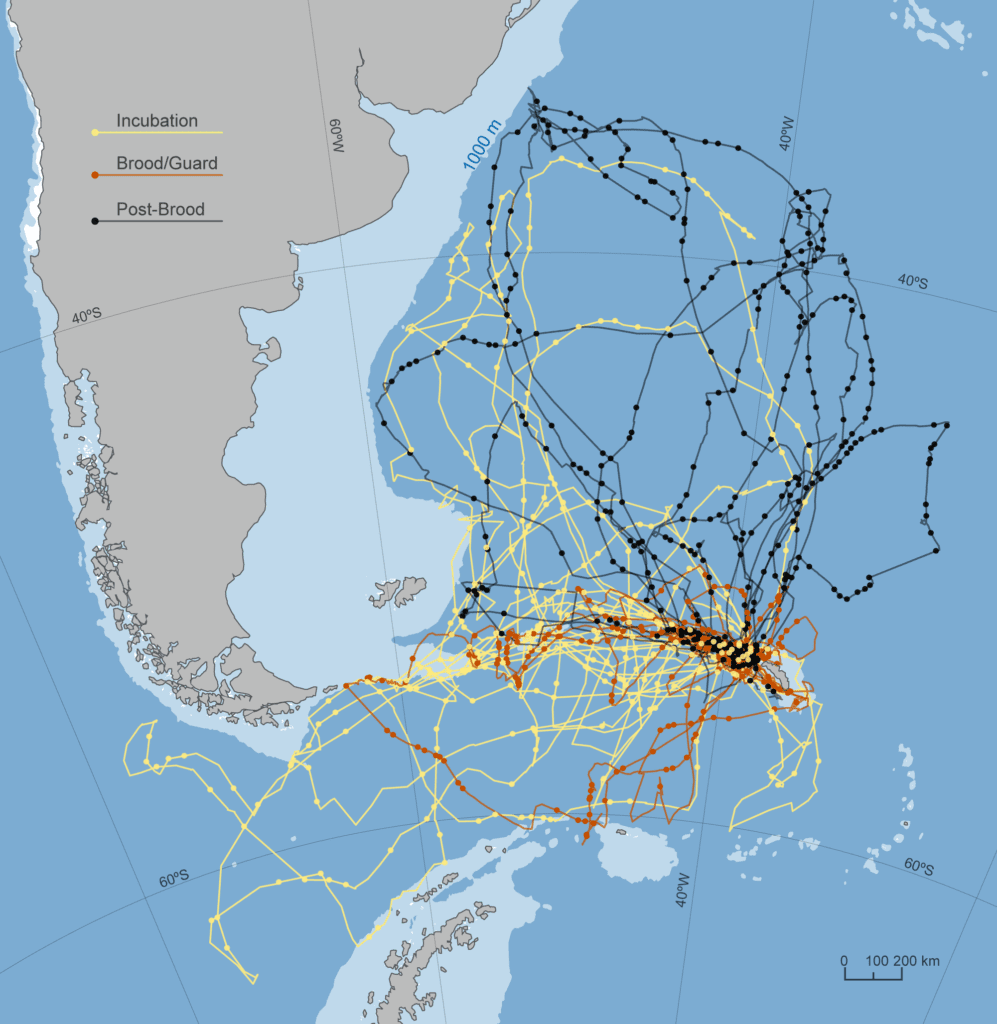
Trajectories of breeding wandering albatrosses nesting on South Georgia Island in the South Atlantic. These birds are highly adapted to long-distance soaring flight assisted by a wingspan of up to 11 feet--the largest known of any living bird. They use the winds to soar thousands of miles seeking food to bring back to nourish their chicks. (Map by Natalie Renier, ©Woods Hole Oceanographic Institution)
For the study, researchers used GPS to track 46 wandering albatrosses during foraging trips the birds made between February to September 2004. The birds were breeding on Bird Island, which is off the northwest tip of South Georgia in the Southern Atlantic Ocean. Wandering albatrosses lack sufficient musculature to sustain continuous flapping flight for long periods of time; however they have a shoulder lock that mechanically holds their wings outstretched so that little energy is expended while soaring, according to the paper.
Since the earliest days of scientific inquiry, the way that many birds are able soar—that is, fly without flapping their wings—has fascinated and perplexed observers, said paper co-author Ewan D. Wakefield , affiliate researcher at the University of Glasgow and postdoctoral research associate at the University of Durham, UK. Wandering albatrosses are particularly remarkable for their ability to soar over the surface of the sea for long periods, covering vast distances, Wakefield said. He added that the physical principles explaining dynamic soaring flight were established over a century ago: Basically, albatrosses swoop up and down between layers of fast and slow moving air near the surface of the sea, gaining airspeed each time they do so.
“However, as our study shows, real-world albatross flight differs considerably from the predictions of simple physical models,” Wakefield said. “On the one hand, our GPS-tracking data show that they can and do fly in lighter winds than dynamic soaring models say should be possible. We suspect that this is because they can also fly by surfing updrafts created by the large waves that constantly surge around their Southern Ocean home. On the other hand, the upper limit of albatrosses' airspeed that we measured is much slower than physics predicts. We think that this is because albatrosses need to keep the forces on their wings within tolerable limits. After all, they're made from bone and muscle, not aluminum and titanium. Our study therefore points to ways in which theoretical models need to be refined to capture more faithfully the amazing complexity and beauty of albatross flight.”
Richardson recalled being entranced by wandering albatrosses ever since he observed them during a 1997 oceanographic cruise in the South Atlantic Ocean. “We were steaming upwind at 15 knots, pounding into waves, and these albatrosses caught up to us from astern and were cruising around and having a grand old time,” Richardson said. “I sat there for hours watching these birds in amazement, and wondering how they could fly like that. Now we are learning more about how they do it.”
Funding for this research was provided by the Woods Hole Oceanographic Institution emeritus fund and the UK Natural Environment Research Council.
Authors: Philip L. Richardson 1 and Ewan D. Wakefield 2
Affiliations:
1 Department of Physical Oceanography, Woods Hole Oceanographic Institution, Woods Hole, MA, USA
2 Institute of Biodiversity, Animal Health and Comparative Medicine, University of Glasgow, Glasgow, UK
About Woods Hole Oceanographic Institution
The Woods Hole Oceanographic Institution (WHOI) is a private, non-profit organization on Cape Cod, Massachusetts, dedicated to marine research, engineering, and higher education. Established in 1930, its primary mission is to understand the ocean and its interaction with the Earth as a whole, and to communicate an understanding of the ocean’s role in the changing global environment. WHOI’s pioneering discoveries stem from an ideal combination of science and engineering—one that has made it one of the most trusted and technically advanced leaders in basic and applied ocean research and exploration anywhere. WHOI is known for its multidisciplinary approach, superior ship operations, and unparalleled deep-sea robotics capabilities. We play a leading role in ocean observation and operate the most extensive suite of data-gathering platforms in the world. Top scientists, engineers, and students collaborate on more than 800 concurrent projects worldwide—both above and below the waves—pushing the boundaries of knowledge and possibility. For more information, please visit www.whoi.edu
Key takeaways:
- By analyzing GPS tracks of wandering albatrosses, researchers have found that the birds’ airspeed increases with wind speed up to a maximum of 20 meters per second (45 miles per hour).
- Researchers developed a model of dynamic soaring, which predicts that the birds could fly much faster than 20 meters per second (m/s). However, researchers hypothesize that the birds limit their maximum across-wind airspeeds to about 20 m/s in higher wind speeds (and greater wind turbulence), probably to keep the aerodynamic force on their wings during dynamic soaring well below the mechanically-tolerable limits of wing strength.
- The paper concludes that the birds limit airspeed by adjusting the turns in their trajectories to be around 60° and that in low winds the birds exploit updrafts over waves to supplement dynamic soaring.
- Although a theoretical model predicted that the minimum wind speed necessary to support dynamic soaring is greater than 3 meters per second (m/s), GPS-tracked albatrosses were observed in flight at wind speeds as low as 2 m/s. Researchers hypothesize at these very low wind speeds, wandering albatrosses fly by obtaining additional energy from updrafts over water waves.
- The study points to ways in which theoretical models need to be refined to capture more faithfully the amazing complexity and beauty of albatross flight.
Wandering Albatross
Diomedea exulans.
The snowy albatross, also known as the white-winged albatross or goonie, is a majestic seabird belonging to the Diomedeidae family. It is recognized for its impressive wingspan, which is the largest of any living bird, and its predominantly white plumage that becomes whiter with age. The snowy albatross is distinguished by its large pink bill and feet, and the males exhibit whiter wings than females.
Identification Tips
Adult snowy albatrosses have white bodies contrasted with black and white wings. The wings of males are predominantly white, with only the tips and trailing edges presenting as black. This species is the whitest within its complex, with others showing more brown and black on the wings and body. A salt gland above their nasal passage helps them excrete excess salt due to their oceanic diet.
The snowy albatross boasts a wingspan that can exceed 3.5 meters (11 feet), with an average span of around 3.1 meters (10 feet 2 inches). Body length ranges from 107 to 135 cm (3 feet 6 inches to 4 feet 5 inches), with females being slightly smaller than males. Adults typically weigh between 5.9 to 12.7 kg (13 to 28 lb).
Distribution and Habitat
This bird has a circumpolar range in the Southern Ocean and breeds on islands such as South Georgia, Crozet, Kerguelen, Prince Edward, and Macquarie. It is also seen feeding year-round off the coast of New Zealand and is known for its extensive flights, sometimes circumnavigating the Southern Ocean three times in a year.
The snowy albatross is a far-ranging bird, spending most of its life in flight and landing only to breed and feed. It is capable of gliding for hours without flapping its wings, thanks to its large wingspan.
Song & Calls
During courtship, snowy albatrosses engage in a variety of displays, including spreading their wings, head-waving, bill-rapping, and producing a range of vocalizations from screams and whistles to grunts and bill clapping.
Snowy albatrosses are monogamous, often mating for life, and breed biennially. They lay a single white egg with a few spots in a large grassy nest. Incubation takes about 11 weeks, with both parents sharing the responsibility. The chicks are nurtured by both parents, who take turns foraging for food.
Similar Species
The snowy albatross is part of the wandering albatross species complex, which includes the Tristan albatross and the Antipodean albatross. It can be distinguished from its relatives by its whiter plumage and larger size.
Diet and Feeding
These birds feed on cephalopods, small fish, and crustaceans, often foraging further out in the open ocean than other albatross species. They are known to follow ships and can make shallow dives to capture their prey.
Conservation Status
The IUCN lists the snowy albatross as vulnerable. Threats include longline fishing and pollution. Conservation measures have been implemented in some regions to reduce bycatch and protect their breeding grounds.
.css-1cn5y0j{border-radius:0.25rem;font-size:0.875rem;line-height:1.25rem;font-weight:650;letter-spacing:0em;--tw-text-opacity:1;color:rgb(45 49 66 / var(--tw-text-opacity));font-style:normal;font-weight:650;margin-left:2rem;margin-right:2rem;margin-bottom:1.5rem;font-size:1.875rem;line-height:2.25rem;}@media (min-width: 768px){.css-1cn5y0j{margin-left:3rem;margin-right:3rem;}} Wandering Albatrosses on Birda
Your birdwatching journey like never before.
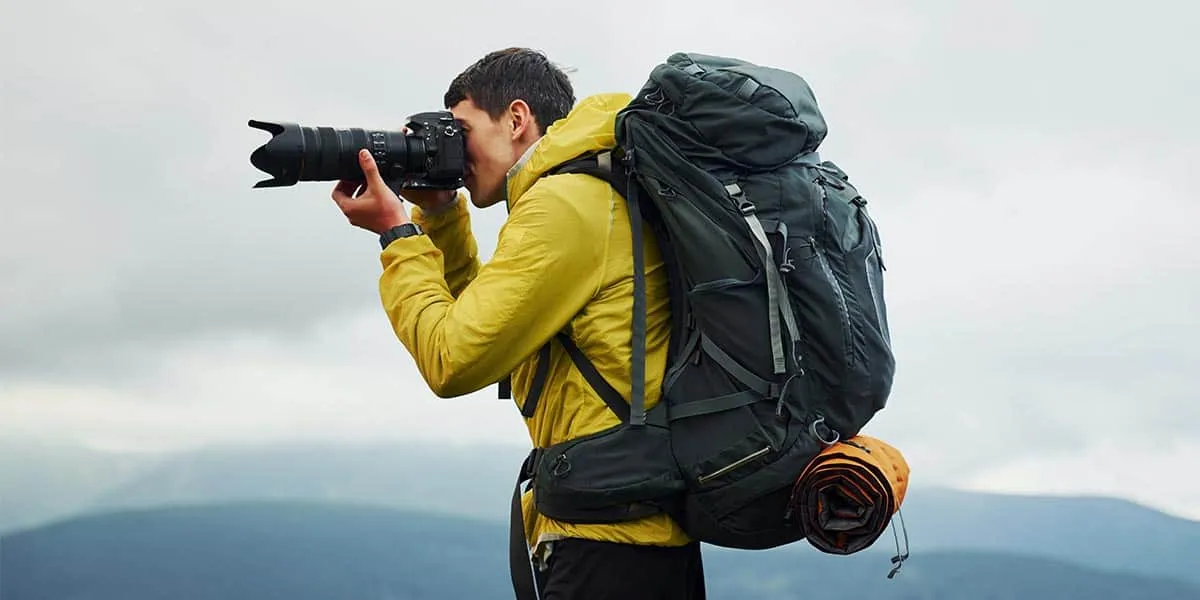
As featured in

Wandering Albatross
These remarkably efficient gliders, named after the Greek hero Diomedes, have the largest wingspan of any bird on the planet
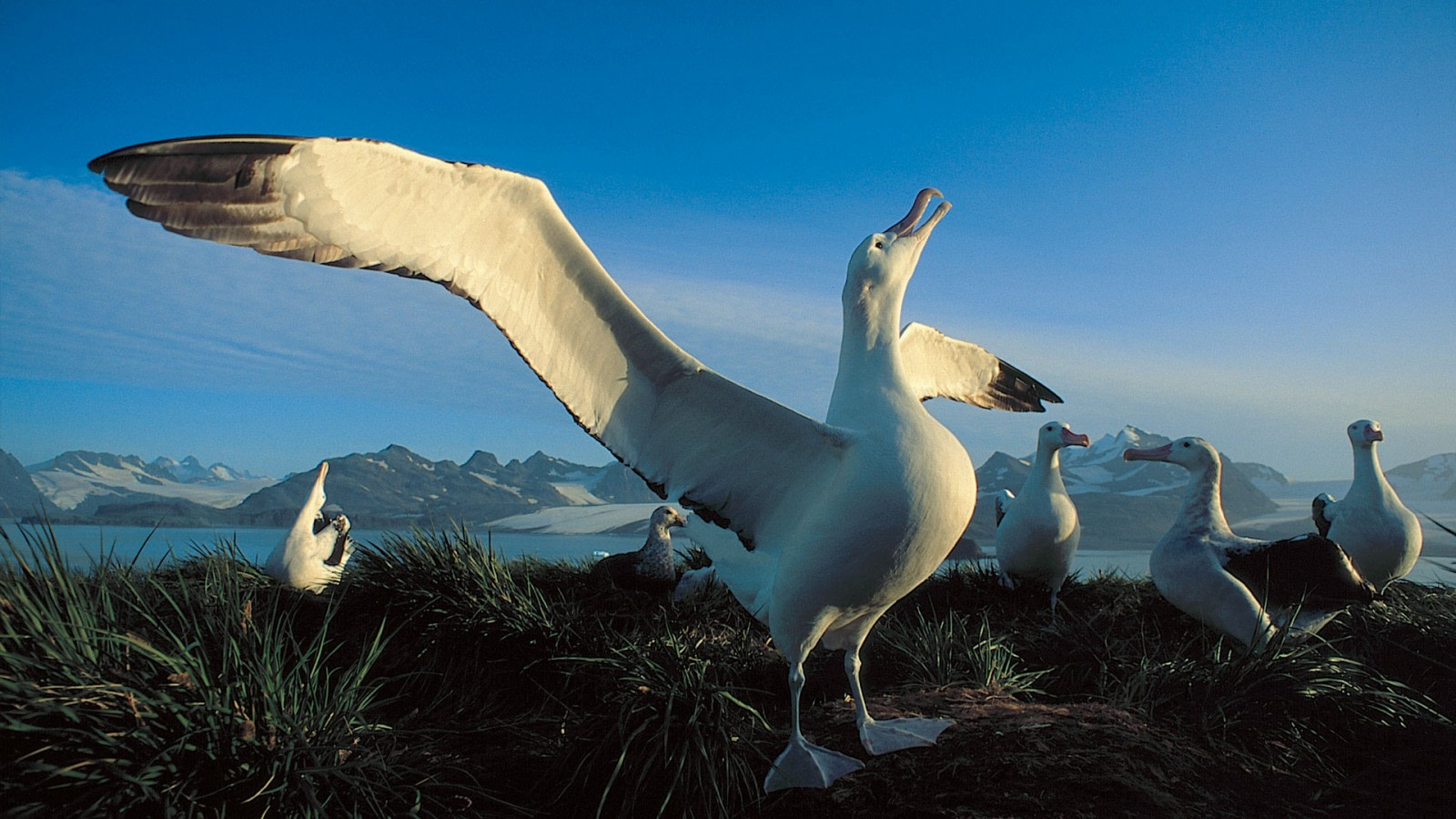
Region: Antarctica
Destinations: Bouvet Island, Antarctic Peninsula, South Georgia
Name : Wandering Albatross, Snowy Albatross, White-winged Albatross ( Diomedea exulans )
Length: Up to 135 cm.
Weight : 6 to 12kg.
Location : All oceans except in the North Atlantic.
Conservation status : Vulnerable.
Diet : Cephalopods, small fish, crustaceans.
Appearance : White with grey-black wings, hooked bill.
How do Wandering Albatrosses feed?
Wandering Albatrosses make shallow dives when hunting. They’ll also attempt to eat almost anything they come across and will follow ships in the hopes of feeding on its garbage. They can gorge themselves so much that they become unable to fly and just have to float on the water.
How fast do Wandering Albatrosses fly?
Wandering Albatrosses can fly up to 40 km per hour.
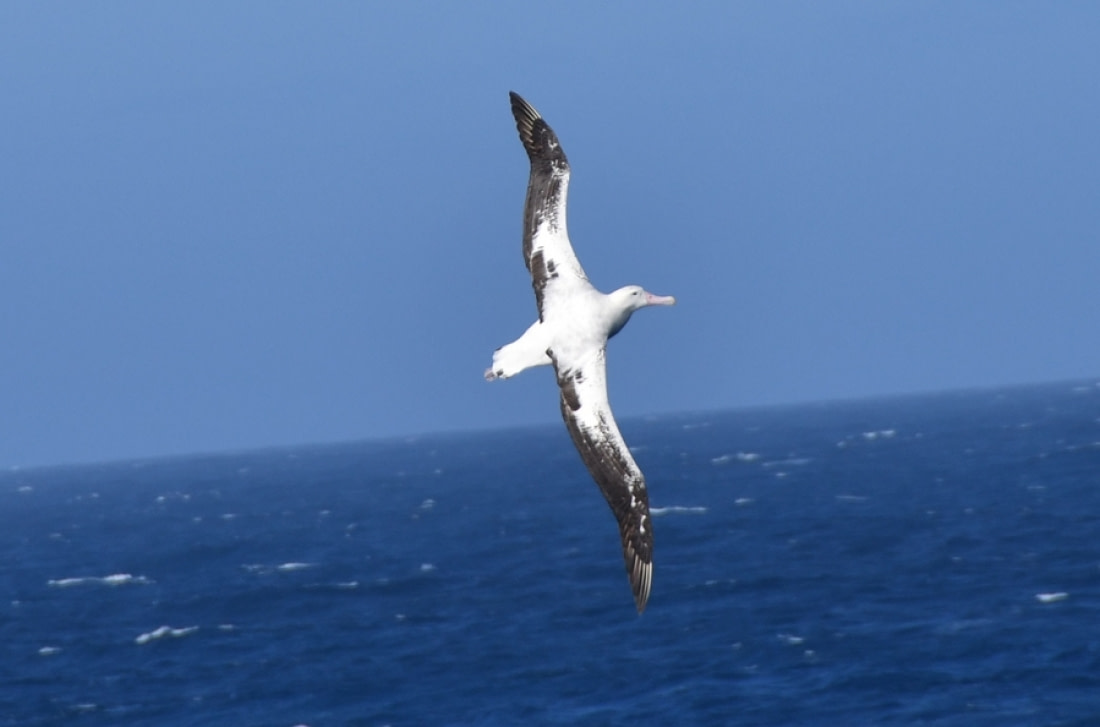
What are Wandering Albatross mating rituals like?
Wandering Albatrosses mature sexually around 11 years of age. When courting, the male Wandering Albatross will spread his wings, wave his head around, and rap his bills against that of the female while making a braying noise. The pair will mate for life, breeding every 2 years. Mating season starts in early November with the Albatrosses creating nests of mud and grass on one of the Sub-Antarctic islands. The female will lay 1 egg about 10 cm long, sometime between the middle of December and early January. Incubation takes around 11 weeks, the parents taking turns. Once the chick is born the adults switch off between hunting and staying to care for the chick. The hunting parent returns to regurgitate stomach oil for the chick to feed on. Eventually both parents will start to hunt at the same time, visiting with the chick at widening intervals.
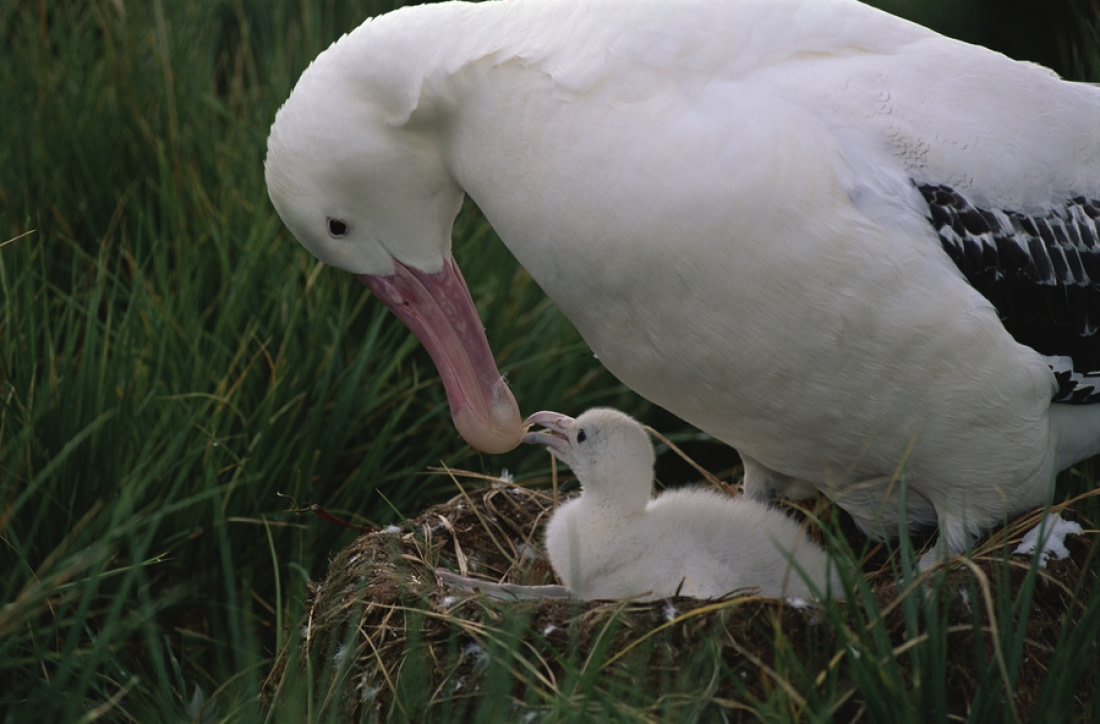
How long do Wandering Albatrosses live?
Wandering Albatrosses can live for over 50 years.
How many Wandering Albatrosses are there today?
There are about 25.200 adult Wandering Albatrosses in the world today.
Do Wandering Albatrosses have any natural predators?
Because they’re so big and spend almost all of their lives in flight, Wandering Albatrosses have almost no natural predators.
7 Wonderful Wandering Albatross Facts
- The Wandering Albatross is the largest member of its genus ( Diomedea ) and is one of the largest birds in the world.
- Wandering Albatrosses are also one of the best known and most studied species of birds.
- Diomedea refers to Diomedes, a hero in Greek mythology; of all the Acheaens he and Ajax were 2 nd only to Achilles in prowess. In mythology all of his companions turned into birds. Exulans is Latin for “exile” or “wanderer.”
- Wandering Albatrosses have the largest wingspan of any bird in the world today, stretching up to 3.5 metres across.
- Wandering Albatrosses are great gliders – they can soar through the sky without flapping their wings for several hours at a time. They’re so efficient at flying that they can actually use up less energy in the air than they would while sitting in a nest.
- Wandering Albatrosses have a special gland above their nasal passage that excretes a high saline solution. This helps keep salt level in their body, combating all the salt water they take in.
- Wandering Albatrosses get whiter the older they get.

Related cruises
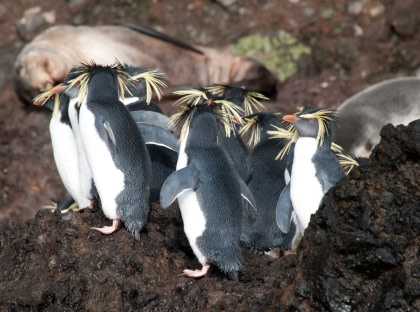
Atlantic Odyssey, excl. Antarctic Peninsula
This far-ranging expedition voyage sails the breadth of the Atlantic, visiting several of the remotest islands in the world!
HDS31-24 The Atlantic Odyssey cruise visits some of the remotest islands in the world, crossing the migratory paths of Arctic Terns, Long-tailed Skuas, other birds, and a variety of whales as they make their annual expeditions north for the breeding season.
m/v Hondius
Cruise date:
28 Mar - 20 Apr, 2024
Berths start from:
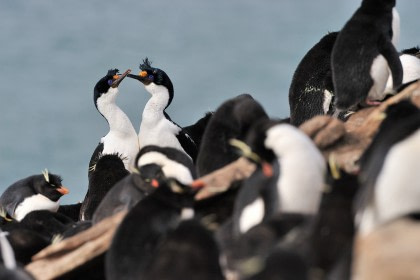
Falkland Islands - South Georgia - Antarctica
Meet at least six penguin species!
PLA20-24 A cruise to the Falkland Islands, South Georgia & the Antarctic Peninsula. Visit some of the most beautiful arrays of wildlife on Earth. This journey will introduce you to at least 6 species of penguin and a whole lot of Antarctic fur seals!
m/v Plancius
18 Oct - 7 Nov, 2024
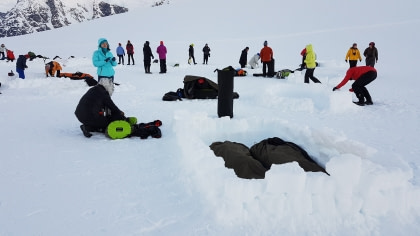
Antarctica - Basecamp - free camping, kayaking, snowshoe/hiking, photo workshop, mountaineering
The best activity voyage in Antarctica
HDS21a24 The Antarctic Peninsula Basecamp cruise offers you a myriad of ways to explore and enjoy the Antarctic Region. This expedition allows you to hike, snowshoe, kayak, go mountaineering, and even camp out under the Southern Polar skies.
1 Nov - 13 Nov, 2024
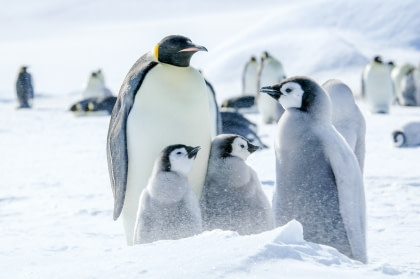
Weddell Sea – In search of the Emperor Penguin, incl. helicopters
Searching for the Elusive Emperor Penguins
OTL22-24 A true expedition, our Weddell Sea cruise sets out to explore the range of the Emperor Penguins near Snow Hill Island. We will visit the area via helicopter and see a variety of other birds and penguins including Adélies and Gentoos.
m/v Ortelius
10 Nov - 20 Nov, 2024
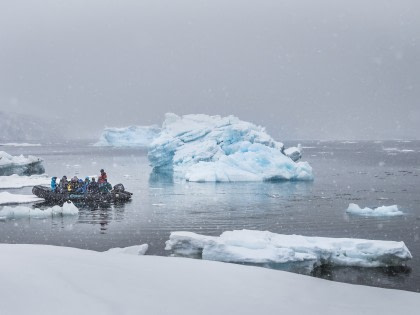
OTL23-24 A true expedition, our Weddell Sea cruise sets out to explore the range of the Emperor Penguins near Snow Hill Island. We will visit the area via helicopter and see a variety of other birds and penguins including Adélies and Gentoos.
20 Nov - 30 Nov, 2024
We have a total of 61 cruises

Meet the Largest Flying Bird in the World: The Wandering Albatross
Published: July 15, 2023
The animal kingdom is filled with diverse incredible creatures, each with unique characteristics and abilities. Among them, the wandering albatross stands out as one of the most fascinating birds on the planet. With a wingspan of over three meters, it proudly holds the title of the largest flying bird in the world. These majestic creatures are known for their long-distance flights over the open ocean and remarkable resilience in surviving harsh weather conditions. Get ready to be amazed by this remarkable bird’s incredible abilities and features!
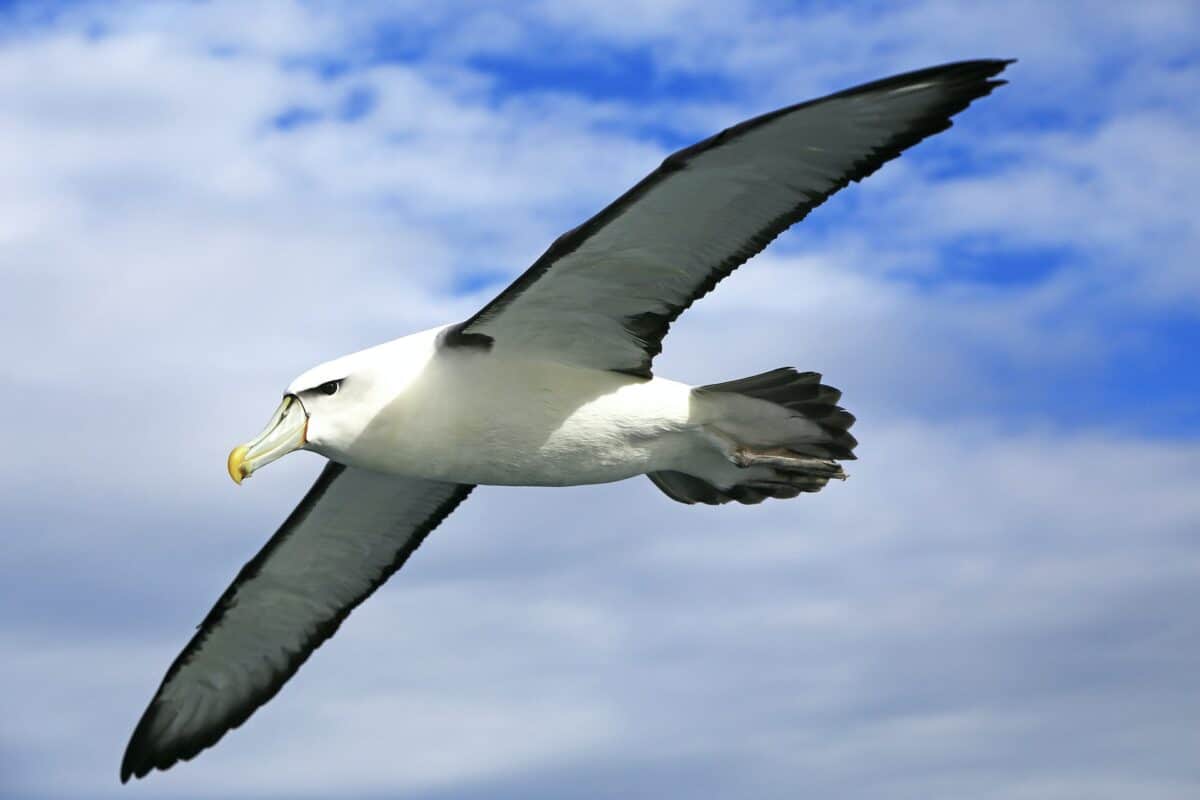
Soar to any section below!
Physical Characteristics
The wandering albatross can span over three meters, making it the largest flying bird in the world. This feature sets the wandering albatross apart from all other birds, giving it a unique and majestic appearance. As for their weight, albatrosses are relatively light despite their size, weighing in at around 7-11 kilograms.
The wandering albatross’s wingspan is a marvel of nature. Its wings are incredibly long and broad, specifically suited to gliding over long distances. Although they may look cumbersome, these wings are perfectly designed to give the bird maximum lift while minimizing drag during flight. This allows the wandering albatross to fly great distances without too much energy.

Feather Colors
The wandering albatross is mainly white, with black feathers on its back and wings. The color of its feathers gives the wandering albatross a striking appearance and serves a practical purpose. The white feathers help the bird blend with its surroundings, making it less visible to potential predators. On the other hand, the black feathers on its back help absorb heat, which is important when flying over the open ocean.
The wandering albatross’ beak is distinctive, with a hooked shape perfectly suited to its diet. These birds are primarily scavengers and will eat anything from squid to fish, with the occasional seal carcass thrown in. Their hooked beak helps them rip apart tough materials, such as fish skin, which they swallow whole.
Check out: Unearth the Reality of Georgia’s Brown Recluse Spiders .
Behavior And Lifestyle Of The Wandering Albatross

The wandering albatross is not just a remarkable bird because of its physical characteristics, it also showcases fascinating behaviors that have captivated researchers and bird enthusiasts alike. In this section, we delve into the distinct behaviors of the wandering albatross, including its breeding habits, migration patterns, hunting techniques, and socialization within flocks.
Breeding Habits
Breeding is a crucial part of the wandering albatross’s life cycle, and they typically breed on remote sub-Antarctic islands. These islands provide a haven for the birds to mate and rear their young without the threat of predators. Breeding pairs will mate for life; every breeding season, they will mate and produce a single egg that they take turns incubating. During incubation, the male and female albatrosses stay in the nest to keep the egg warm. Once the egg hatches, the parents feed the chick, regurgitating food from their stomachs to feed their young.

Migration Patterns
One of the most unusual behaviors of the wandering albatross is its long-distance migration patterns. These birds can fly thousands of kilometers over the open ocean, often without resting, for months. The albatrosses do this to find food, as their main source of nutrition is squid and fish, which they hunt in the open ocean. The wandering albatross also has a unique way of navigating their migrations. They use the Earth’s magnetic field as a guide, using their ability to sense the Earth’s magnetic field to orient themselves and navigate their journeys.
Hunting Techniques
When it comes to hunting, the wandering albatross has developed unique techniques that allow them to thrive in the harsh and challenging conditions of open ocean hunting. They use their incredible eyesight and sense of smell to locate squid and fish in the water. Once they spot their prey, they use their long, powerful wings to fly just above the water’s surface, dipping their beaks into the water to snatch up their meal.
Check out: Surviving the Realm of Tiger Snake Bites .
Socialization Within Flocks
The wandering albatross is a highly social bird, often forming large flocks when not breeding. These flocks provide safety and companionship for the birds while on their long journeys. They also perform elaborate courtship rituals within these flocks, using intricate dance moves and calls to attract potential mates.
Check out: Lost Cat’s Remarkable Cross-Country Journey Home .
Conservation Status Of The Wandering Albatross
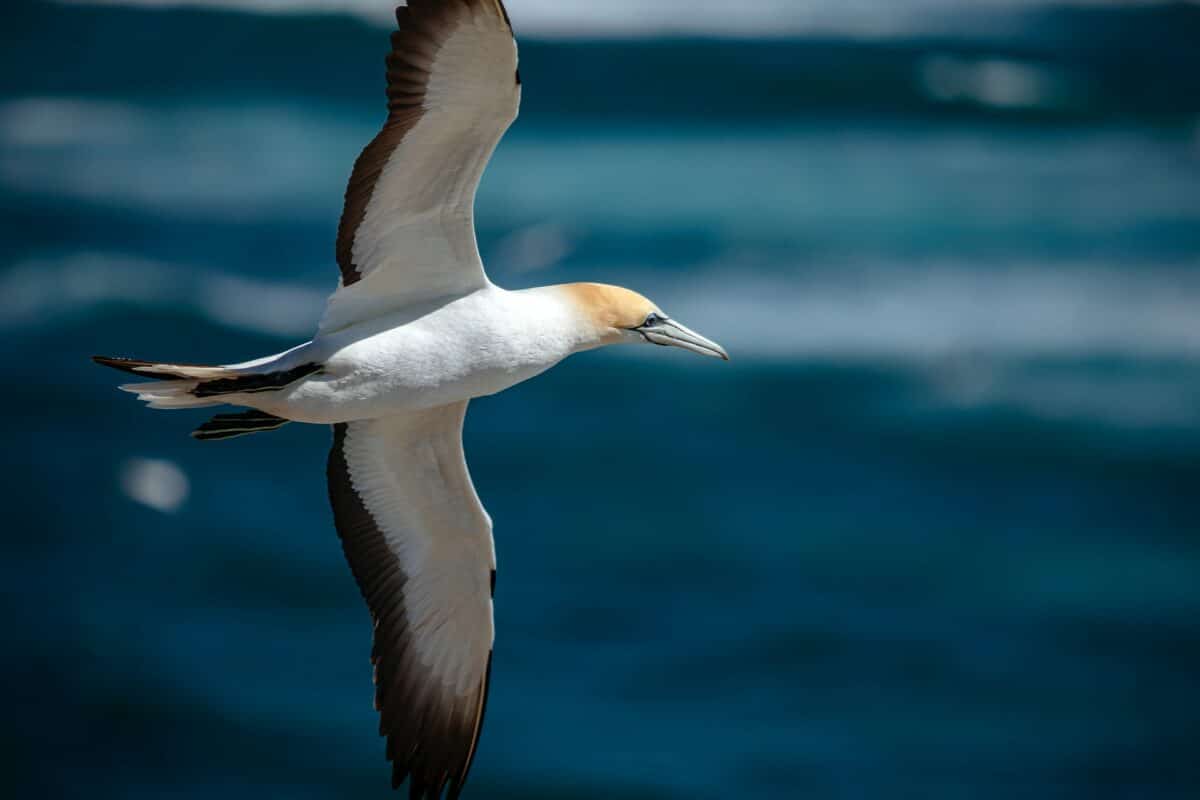
The wandering albatross is undoubtedly one of the most striking birds on the planet. Unfortunately, it is one of the most vulnerable species and is listed as “endangered” under the IUCN Red List , meaning it is at risk of extinction. The wandering albatross faces numerous threats to its population, including climate change, habitat loss, and human activities such as fishing, pollution, and plastic waste.
Threats To Wandering Albatross Population
Climate change has caused a significant impact on the wandering albatross population. Changes in water temperature and ice cover affect the bird’s food supply, which can result in lower breeding success rates. The increase in plastic waste has also led to many albatrosses suffering entanglement and ingestion of plastic debris, resulting in death. The longline fishing industry is another serious threat to their population, with these birds accidentally killed by fishing hooks and nets.
Conservation Efforts
Several conservation efforts have been implemented to combat these threats to the wandering albatross population. The Agreement on the Conservation of Albatrosses and Petrels (ACAP) is an international agreement aimed to conserve albatross and petrel species and reduce the impact of harmful fishing practices.
The ACAP framework has implemented measures such as using bird-scaring streamers and setting longline fishing at night to avoid seabirds. There are also efforts to reduce plastic pollution through cleanup projects and recycling campaigns.
Success Stories
Despite the threats, there are some success stories. For example, in Macquarie Island, a designated United Nations Educational, Scientific, and Cultural Organization ( UNESCO ) World Heritage Site, the wandering albatross population is thriving due to strict conservation measures, including removing introduced animals such as rats and rabbits, which prey on the bird’s eggs and chicks.
Further efforts have led to the reduction of bird deaths due to fishing hooks. In South Africa, using small circle hooks has reduced the number of albatrosses caught in fishing gear by over 90%. These hooks do not harm the birds and can be easily removed if caught.
The wingspan of a Wandering Albatross can reach up to 11 feet, the largest of any bird in the world.
Wandering Albatross mainly feeds on fish and squid and can travel up to 600 miles daily to find food.
Wandering Albatross can live for up to 50 years and are known for their lifelong monogamous breeding pairs and unique courtship rituals.

The wandering albatross is an extraordinary bird that continues to capture the hearts and minds of scientists, birdwatchers, and nature enthusiasts worldwide. Its remarkable wingspan, ability to fly long distances over the open ocean, and resilience in harsh weather conditions are just a few qualities that set this bird apart from its peers. It’s no wonder that the wandering albatross is the world’s largest flying bird. With all its fantastic abilities and characteristics, it’s an animal kingdom marvel that deserves all the admiration and respect it gets.
Thanks for reading along! See below for related article links.
- Great White Shark Vs. Bull Shark
- The World’s Largest Land Predator: The Polar Bear
- Gorilla Vs. African Forest Buffalo
- Unveiling The Longest Snake In the World
- Discover Pennsylvania’s Hidden Threat: The Timber Rattlesnake
- Latest Posts
- When Mike Tyson offered a zookeeper $10,000 to open the gate to fight a Gorilla - March 24, 2024
- Shocking Standoff: Lone Moose Defies Death Against a Ravenous Wolf Pack! - March 24, 2024
- What you Need To Know About Tiger Snake Bites - March 24, 2024
- Explore photo contests
- Discover photo challenges
- Submit my vote
- Explore photos
- Meet photographers
- Creators Studio
- Photography logos
- Photography Websites
- Get the app
- Partnerships
- Explore photo contests Participate in the official contests
- Discover photo challenges Membership Launch and browse member challenges
- Submit my vote Pick my favorite photos
- My submissions View my top shots and ranks
- Explore photos Curated galleries to inspire you
- The blog Tips, tutorials, interviews and more
- Meet photographers Connect with your favorite creators
- Videos NEW Share your artistic shorts
- Photo gigs NEW Turn your photos into income
- Feedback Membership Get instant feedback on your photos
- Portfolio websites Membership Templates and domain
- Darkroom Presets & tools to edit photos

- Challenge 1
- Collection 1
I, Gene Oryx, a professional photographer from Moscow city, Russia. In 2016 and 2017 he received silver medals at the annual international competition Photoshoot Awards in Montreal. On the contest, and in 2019 - two bronze medals. In the 35 Awards 2017 was among the top 100 photographers of the year.... see more about geneoryx
- Destinations
- How it Works
Hire Your Moscow Vacation Photographer
Book a photoshoot to celebrate and beautifully capture your marriage proposal engagement anniversary beach vacation solo trip babymoon love for travel romantic getaway marriage proposal honeymoon family trip bachelorette
01 Easy to book
Choose your dates and book your favorite available photographer.
02 Quick Turnaround
Edited high-resolution digital photos in 5 business days
03 Quality Photography
Vibrant photos of moments you will cherish forever
04 Local Tips
Best local secrets for what to see, eat, & do in town
Vacation Photographers in Moscow
Handpicked and vetted by our team for quality, style, and skill. Make sure to check availability early so your dates don’t get booked up! Can’t pick your favorite Moscow photographer? Check who is available for your travel dates.
Best Photography Spots for a Moscow Photoshoot
Moscow, the capital of Russia, is a photographer's dream, where the grandeur of historical landmarks meets the vibrancy of contemporary urban life. The city's iconic Red Square, flanked by the colorful domes of St. Basil's Cathedral, offers an irresistible backdrop for architectural and cultural photography. The Kremlin's majestic walls and the monumental GUM department store provide a rich tapestry of visual subjects. Explore the Arbat Street's bohemian charm, the sleek modernity of Moscow City's skyscrapers, or the timeless allure of the Moscow Metro stations adorned with intricate mosaics and chandeliers. Moscow's energetic street life, cultural celebrations, and the juxtaposition of tradition and modernity create endless opportunities for visual storytelling. Whether you're capturing the city's elegance, its dynamic pace, or the rich tapestry of Russian life, Moscow promises an enchanting visual journey for photographers seeking to capture the essence of this iconic metropolis.
Red Square, Moscow's iconic and historic centerpiece, is a photographer's dream come true.... read more

The Kremlin
The Kremlin, Moscow's historic fortress and political heart, is a captivating photo spot w... read more
Moscow Metro
The Moscow Metro, often referred to as an underground art gallery, is a captivating and un... read more
Gorky Park, a lush and vibrant urban oasis in Moscow, is a picturesque photo spot that off... read more
Moscow Photoshoot Packages
Invest in forever capturing postcard-perfect vacation moments. After you check out of the hotel and your return flight lands, these photos will be a cherished souvenir for years to come!
Short & Sweet
For Those On-The-Go
30 Minute Mini Session
with a Professional Photographer
Private Online Gallery
with All the Best Shots
15 Digital Photos Included
Beautifully Edited & High-Res
- Inquire Now
Timeless Souvenir
Couples & Small Families
1 Hour Photoshoot
30 Digital Photos Included
Storyteller
Most Popular!
90 Minute Photoshoot
45 Digital Photos Included
Groups & Photo Lovers
2 Hour Photoshoot
60 Digital Photos Included
What's included in my photoshoot package?
Peace of Mind
Choose from vetted and highly rated personal photographers. Hassle-free booking and a travel-friendly refund policy.
Quick Turnaround
Receive your gallery within 5 business days of your photoshoot, but usually sooner! Download your choice of 15, 30, 45 or 60 digital photos depending on your shoot package.
Expert Photo Editing
All photography is edited for light, color, & sharpness to make your vacation photos gorgeous. Advanced beauty edits are available for purchase.
Your personal photographer also acts as an informal tour guide with all the best photography spots and local secrets for what to see, eat, & do in town.
Print Release
Turn your digital photos into cherished travel prints & wall art! Use our printing partners and get FREE SHIPPING - as low as $1 USD for 4×6 luster prints.
Frequently Asked Questions
Prices vary by city, ensuring you the best rates according to the local market. Choose between photography packages that range from 30 minutes up to 2 hours. The high-resolution photos are professionally edited and delivered by email in a private online gallery within 5 business days. See pricing for your destination here.
Check your dates, and then you'll be notified by email which photographers are available. Book your date and then your local professional photographer will work with you to go over all the best photography spots, when the best light will be, and how to beat the crowds to capture magical moments without tons of other tourists in the background. Local Lens vacation photographers are handpicked artists for quality, style, & skill. Not only will they take amazing photos, but they will edit them to be beautiful photo souvenirs you’ll treasure for years to come.
All photos are professionally edited for vibrance and composition and delivered in a private online gallery where you can download your favorite photos in high-resolution jpg format. Additional files and high-quality prints from our professional partner labs are also available for purchase. You should receive an email with your photography gallery link within five business days.
Hello from Moscow!
Find ideas & inspiration for your romantic getaway, family portraits, engagement photos, bachelorette party, honeymoon, save the date, or anniversary gift!
Ready to finally return home with beautiful vacation photography?
Miami is where the magic of sun, sea, and style mix so seemingly and where photos come out incredible! With its iconic Art Deco architecture along Ocean Drive, pristine sandy beaches, and a rich cultural mosaic, Miami offers a diverse range of photographic opportunities. So, are you ready to pose and snap some photos in this interesting destination? Check out the top photo spots in Miami: 📍South Pointe Beach — With its powdery white sand, azure waters, and a backdrop of towering luxury condominiums, it offers a quintessential Miami beach experience. 📍Lummus Park & Beach — The wide promenade, lined with palm trees and iconic lifeguard towers, offers a lively backdrop for capturing the essence of Miami’s sun-soaked lifestyle. 📍Vizcaya — A magnificent Italian Renaissance-style villa turned museum in Miami, is a photographer’s dream, offering a glimpse into the opulence of the Gilded Age. 📍Pier Park at Sunny Isles — The pier, extending gracefully into the Atlantic Ocean, offers a stunning vantage point for capturing breathtaking ocean views and vibrant sunsets. 📸 Captured by Natasha in Miami, USA 🌐 www.locallens.com ▶️ #locallensphotographers . . . #coupletravel #coupleshoot #proposalideas #proposalphotography #miamiphotographer #miamifl #miamiphotographt #visitmiami #travelmiami #miamiflorida #floridaphotographer #floridaphotographers #floridaphotography #proposalinspiration #surpriseproposal #proposalphotography #weddingproposal

Imagine popping the question in Machu Picchu? 🤯 Sounds like a unique and beautiful way to start the next chapter of your lives as fiances. And while it sounds incredible, there are some things you need to keep in mind to make your Machu Picchu proposal a reality. 1️⃣ Buy your entrance ticket at least a month in advance. 2️⃣ When buying your ticket, pick a morning timeslot. 3️⃣ Expect to stay longer if you’ve purchased a morning entrance. 4️⃣ Bring your passport to get a special Machu Picchu stamp. 5️⃣ Don’t forget sunblock, bug spray, and layers of clothing. 6️⃣ And remember, small backpacks only! 📸 Captured by Marco in Machu Picchu, Peru 🌐 www.locallens.com ▶️ #locallensphotographers . . . #proposalideas #proposalphotography #cuzcoperu #cuscocity #cuscoperu #visitcusco #7thwonderoftheworld #couplephotoshoot #machupicchu #machupicchutravel #machupicchuperu #travelsouthamerica #cuzco #visitperu #travelperu #ig_southamerica #surpriseproposal #proposalinspiration #weddingproposal
Seville is ‘bonita’ and a photographer’s paradise. The city is the perfect mix of history, culture, and architectural gems, making it an excellent destination for a photoshoot. Here are some of our favorite photo spots for a Seville photoshoot: 📍Plaza de España — The most popular spot! This architectural masterpiece wraps around an enormous square with fountains, moats, and tiled walls and offers plenty of photo opportunities. 📍Barrio Santa Cruz — This captivating and historically rich district was formerly the Jewish quarter of Seville, characterized by its ancient alleyways and meandering streets. 📍Royal Alcazar — Looking for a royal vibe in your photos? Renowned for its diverse gardens and historical influences, the Moorish Royal Palace is one of Spain’s most exquisite structures. 📍Parque Maria Luisa — Maria Luisa Park, situated just behind Plaza de España, is an ideal location for photography with its flourishing flower gardens and scenic tree-shaded pathways. 📸 Captured by Tatsiana in Seville, Spain 🌐 www.locallens.com ▶️ #locallensphotographers . . . #sevillespain #sevillephotographer #sevillecity #sevilletravel #visitseville #visitspain #familyphotoshoot #familyphotoideas #familyphotography
If you’re a soon-to-be momma, you deserve a babymoon in Europe to spoil yourself before the sleepless nights begin! A babymoon, more than a trip is the perfect time to spend time with your partner, relax and mentally prepare for all that lies ahead. And there is no better place than Europe and its many destinations perfect for future parents. Here are some of our favorite babymoon destinations in Europe: 📍Prague 📍Lake Como 📍Santorini 📍Lucerne 📍Sintra 📍Amsterdam 📍Madrid 📍Valencia Any other destination we should add to the list of babymoons? Let us know in the comments! 📸 Captured by Victor in Prague 🌐 www.locallens.com ▶️ #locallensphotographers . . . #charlesbridge #charlesbridgeprague #pragueoldtown #praguetrip #praguephoto #coupletravel #praguephotography #pragueworld #visitprague #praguestagram #instaprague #praguetoday #czechrepublic #praguecity #praha #praguephotographer #babymoon #momtobe #mumtobe #pregnancyannouncement #pregnancyphotography
Da Nang, a vibrant coastal city in Vietnam, is a fascinating destination that offers an interesting mix of natural beauty and modern urban life. And for those visiting, the city is also the perfect place to get photos in some of its most beautiful spots, like its stunning sandy beaches and lush landscapes. Check out some of the best photo spots in Da Nang: 📍My Khe Beach — This stunning stretch of sandy shores and serene blue waters provides a picturesque backdrop for capturing the essence of a coastal paradise. 📍Marble Mountains (Ngu Hanh Son) — These ancient limestone outcrops are dotted with caves, pagodas, and sacred shrines, providing an array of visual inspiration. 📍Dragon Bridge — This iconic bridge comes to life in the evenings with a thrilling fire-breathing dragon show, creating a dynamic and visually spectacular scene. 📍Linh Ung Pagoda — The pagoda is renowned for its giant Lady Buddha statue, and it’s the perfect spot to capture Vietnam’s cultural richness and natural beauty. 📸 Captured by Trung in Da Nang, Vietnam 🌐 www.locallens.com ▶️ #locallensphotographers . . . #coupletravel #visitvietnam #travelvietnam #couplephotoshoot #danangbeach #danangtravel #danangphotographer #danangphotography #danangtrip #danangvietnam #danangcity #proposalphotography #proposalideas #proposalinspiration #surpriseproposal #weddingproposal
Bangkok is a cultural treasure with many beautiful temples that are a must-visit if you are looking for an enriching experience. But the choice is hard, as Bangkok has more than 400 temples. So, which one to pick? Luckily, we have made a top 5 pick of the best temples or ‘wats’ to visit in Bangkok. 1️⃣ Wat Arun Ratchawararam (Temple Of Dawn) — An ancient temple dating back to the Ayutthaya period and considered a Royal Temple of King Rama II with a stupa considered one of the most beautiful and gigantic stupas in that era. 2️⃣ Wat Phra Chetuphon Wimon Mangkhalaram Ratchaworamahawihan (Wat Pho) — Home of the Reclining Buddha, with various interesting ancient Thai cultural murals around the temple. 3️⃣ Wat Saket Ratchaworamahawihan (Phu Khao Thong) — One of the famous highlights of this temple is its spiral staircase, which has 344 steps. 4️⃣ Wat Trai Mit Witthayaram Worawihan — This temple is home to the solid gold Sukhothai-style Buddha called the seated Phra Phuttha Maha Suwana Patimakon, known as the world’s largest golden Buddha statue. 5️⃣ Wat Benchamabophit (The Marble Temple) — As its name states, the temple’s ordination hall was constructed of marble imported from Italy. 📸 Captured by Suriyathepjuti in Bangkok, Thailand 🌐 www.locallens.com ▶️ #locallensphotographers . . . #bangkokthailand #bangkokcity #bangkoktrip #bangkoktravel #travelphotography #travelandleisure #bangkokspirit #beautiful_bangkok #thailand_allshots #thailandtrip #thailandtravel #adayinthailand #thailandinstagram #amazingthailand #bangkokphotographer
Being a new parent can be both beautiful and unnerving — it is a big responsibility! And if you feel you need some guidance and to set up some goals to help you get your groove back, start by setting some resolutions for this new year. 2024 it’s all about taking care of yourself, and being a new parent doesn’t need to limit that. Here are a few ways you can be the best version of yourself while handling this incredible new role: ❤️ Take a moment to evaluate how you are feeling ❤️ Take time to reconnect with yourself ❤️ Take time to reconnect with your partner ❤️ Enjoy the time you manage to be alone ❤️ Rekindle friendships ❤️ Have dates, just you and your baby. ❤️ Reassess how you are feeling at the end of every month and change your goals accordingly Any other advice you have for new parents? Let us know in the comments! 📸 Captured by Rojeena in Maui, Hawaii 🌐 www.locallens.com ▶️ #locallensphotographers . . . #hawaiiphotographer #hawaiiphotographers #hawaiistagram #hawaiiphotography #hawaiibestphotos #hawaiilove #beachphotography #mauiphotography #mauihawaii #mauistyle #travelhawaii #visithawaii #hawaiitrip #hawaiivacation #hawaiibeaches #mauiphotographer #babymoon #mumtobe #momtobe #pregnancyphotography #pregnantstyle
Okay, a new year has begun, and now it’s time to commit to those resolutions. Yes, it can be challenging, but with the right tips, you can make your wishes a reality and make 2024 the year you stick to your resolutions! Here’s what you have to do to achieve your new year’s goals: ☑️ Start small ☑️ Create goals for different areas of your life ☑️ Write them down ☑️ Prioritize your goals ☑️ Break down bigger goals ☑️ Include friends and other peeps ☑️ Keep it interesting ☑️ Celebrate progress ☑️ Adjust as necessary ☑️ Have patience Now tell us, what are your 2024 resolutions? 📸 Captured by Julia in New York City 🌐 www.locallens.com ▶️ #locallensphotographers . . . #nycphotographer #nycphotographers #nycphotoshoot #nycphotography #newyorkcitylife #newyorklife #newyorkgram #newyork_ig #newyorkcityphotography #newyorktravel #newyorkstyle #newyorktrip #weddingproposal #proposalinspiration #proposalphotography #proposalideas #newyorkstreets #newyorkphotographer #newyorkphotography #newyorkphotos #surpriseproposal
New adventures are around the corner. And this 2024 will be filled with new memories, destinations, health, and happiness. Happy New Year from Local Lens! ✨🍾 📸 Captured by Christopher in Singapore 🌐 www.locallens.com ▶️ #locallensphotographers . . . #singaporeinsiders #singaporetravel #singaporecity #exploresingapore #singaporeig #singaporephotography #singaporediaries #singaporetourism #singaporephotographer #travelasia #surpriseproposal #proposalideas #proposalphotoshoot #proposalinspiration
What a year! 2023 has been a year full of blessings, and many captured memories. Just this year, our local photographers have captured over 4,000 shoots around the world!! From families to engagements, anniversaries, and solo traveling, we love being there and creating memories with you. Thank you for a fantastic year, and we hope to be with you next year, capturing your next chapter. And like they say, cheers to many more! 🥳✨💫 🌐 www.locallens.com ▶️ #locallensphotographers . . . #destinationaphotographer #surpriseproposal #proposalideas #proposalphotography #proposalinspiration #weddingproposal #familyphotography #familyphotoshoot #familyphotoideas
Watch: Three Visions of Moscow
The latest instalment of Magnum’s Live Lab saw Gueorgui Pinkhassov, Mark Power and Alex Webb exploring the city
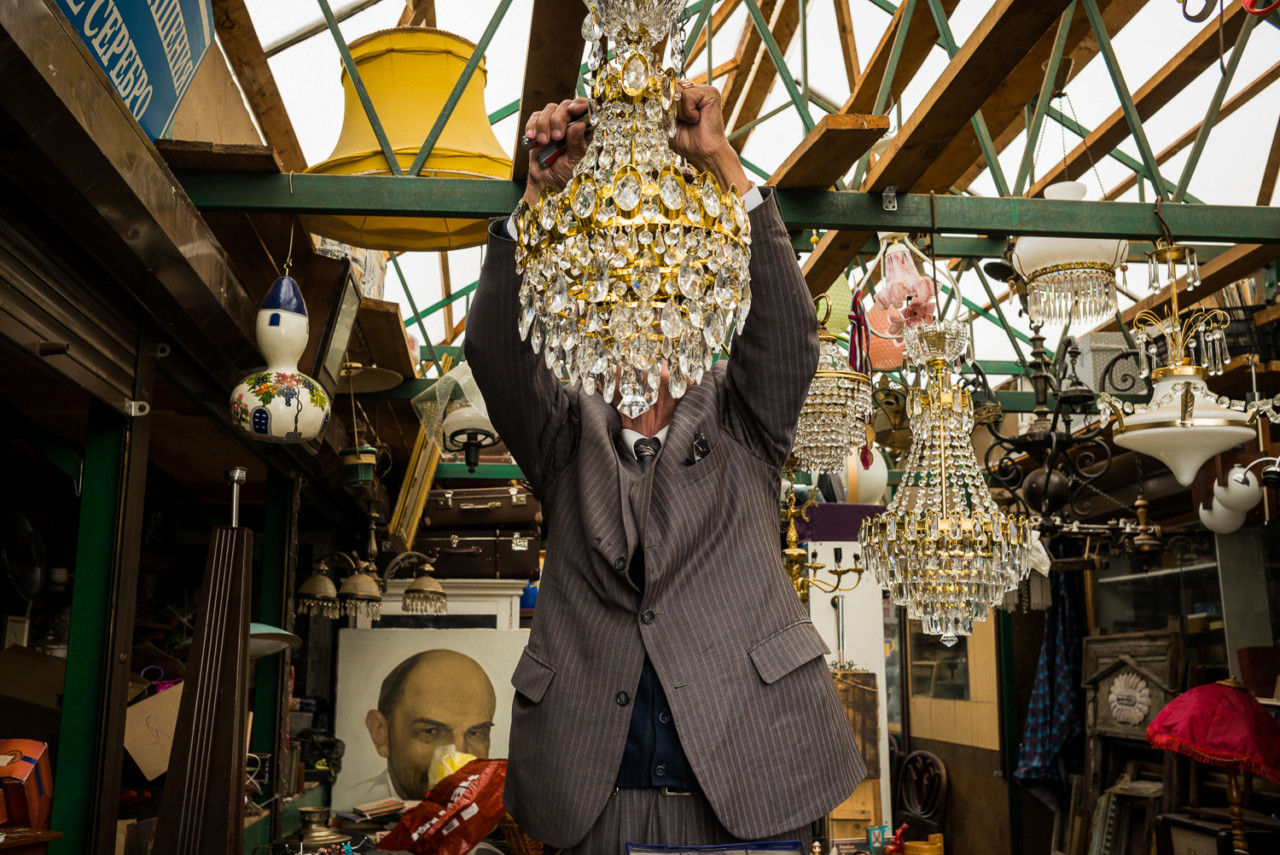
In 2017, to mark the collective’s 70 th anniversary, Magnum Photos organised its first Live Lab: a now-ongoing series of projects in which photographers are set lose in a given location to create new work responding to the locality. The work they make is then edited, curated, and exhibited in situ.
The July 2019 iteration of the Live Lab saw three photographers with renowned – and uterly distinct – approaches to photographing cities: Gueorgui Pinkhassov, Mark Power and Alex Webb – working in the Russian capital.
Nina Gomiashvili, the curator of the Moscow Live Lab explains further below, alongside her curation of images made over the two week Lab. There follows a short film exploring the approaches the photographers took to capturing the essence of Moscow’s ‘hectic reality’.
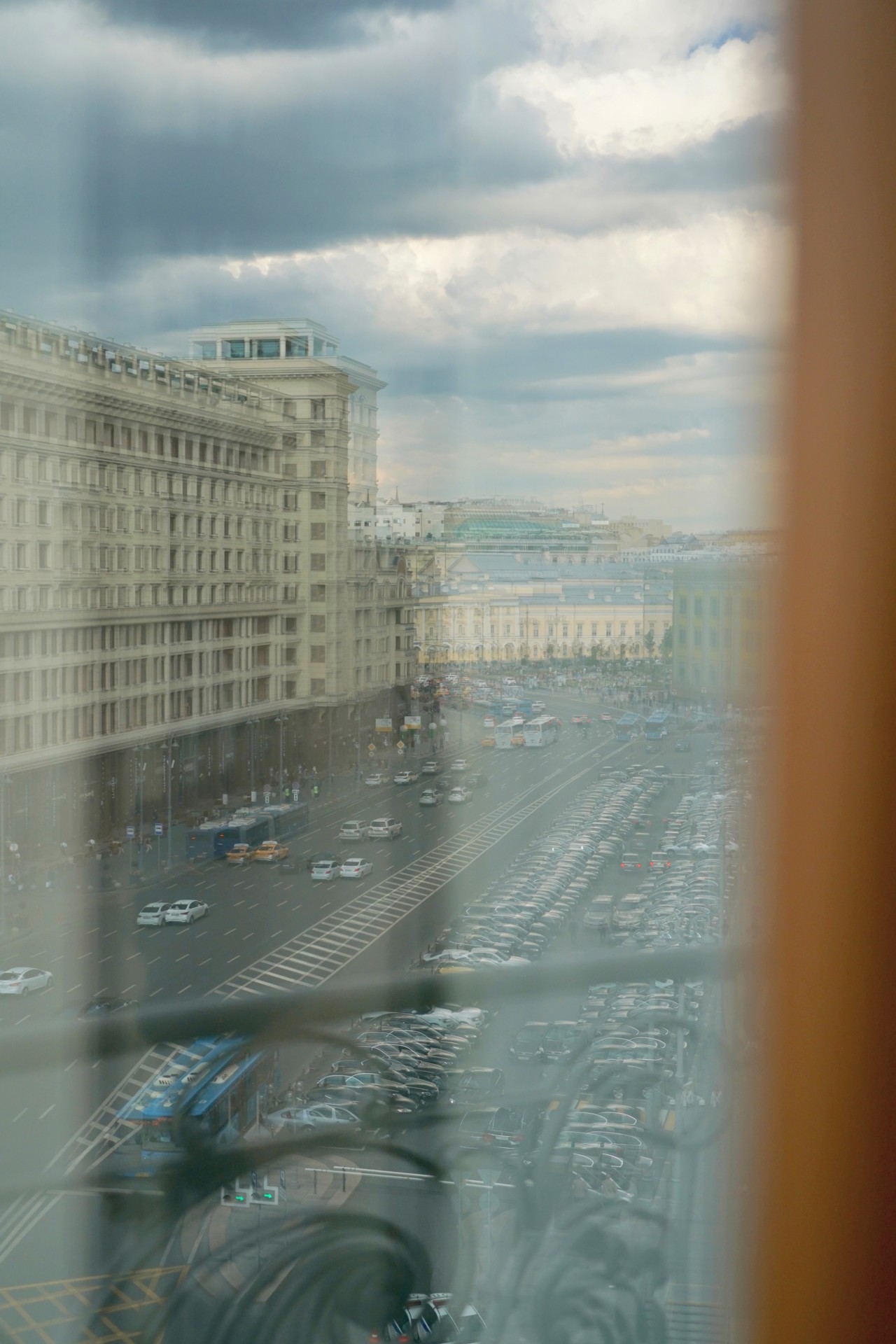
Over two weeks, at the beginning of July, Magnum photographers Mark Power, Gueorgui Pinkhassov and Alex Webb, along with three Sancho Panza-like fixers dived into Moscow’s hectic reality in order to create new work. The outcome of that process was a six week exhibition at the Moscow State Museum of Architecture.
Moscow is not the easiest place to roam around: the city has a mind of its own, and if for some unknown reason visitors or guests are not welcome, it can – as Russian fairy tales say – turn its back on unfortunate wanderers.
Happily, quite the opposite occurred during the two weeks of the Live Lab project. Moscow willingly blossomed, opening up and letting the three photographers observe its inner nature from a variety of angles. The city revealed its remarkable nocturnal palette for Mark Power, with Alex Webb capturing it at a “certain evening hour”, and finally allowing Gueorgui Pinkhassov to capture the uncatchable: the essence of urban light and shadow.

Power’s project, NOCTAMBULIST, saw him wondering the streets of Moscow nocturnally, only creating work between sunset and sunrise using his large-format camera – mounted on a heavy tripod. Power’s Moscow appears surreal, ephemeral. It is sometimes sinister, but always beautiful.
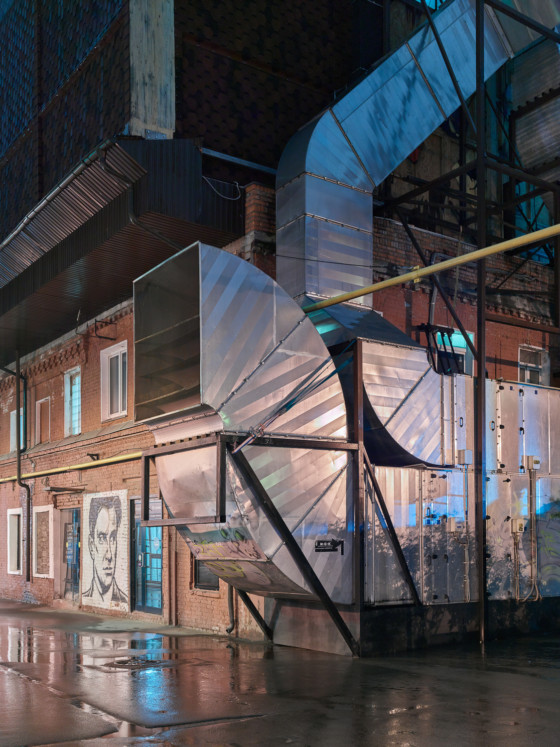
Webb re-read Bulgakov’s tale of the devil visiting the decidedly aetheist Moscow of the 1930s – The Master and Margarita – before arriving in the city, fully immersing himself in the atmosphere of the metropolis. Moscow, with its dynamic rhythm, forced Webb to plunge himself into some unusual shooting conditions, forcing him into making quick, emotional photographs. “I don’t always hunt for a photo, sometimes the photo itself finds me”, he says of the process of his shooting.
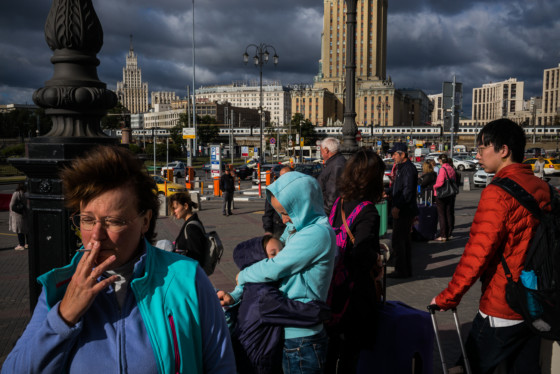
Finally, Pinkhassov photographed his hometown in his usual manner – working with light and color, playing with reflections and shadows and creating outstanding compositions and cleverly captured moments. Guided by his own contradictory rule: “If you want to get closer, try to moving away”
These photographers worked in utterly different ways to unpackage the heart and soul of Moscow.
Nina Gomiashvili
Watch the short film on the 2019 Moscow Live Lab below.
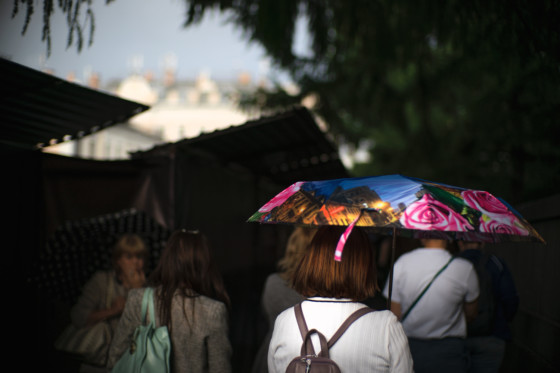

Theory & Practice
Omaha, Nebraska: American Masculinity in the Political Maelstrom
Gregory halpern, explore more.

Arts & Culture
Magnum Photographers Explore Home
Magnum photographers.

Magnum Contact Sheets
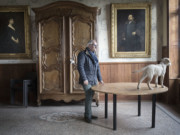
UBS: Ways of Seeing

Partying in Post-Soviet Moscow
Gueorgui pinkhassov.

Retracing Lenin’s Train
Thomas dworzak.
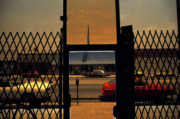
East / West
Harry gruyaert.
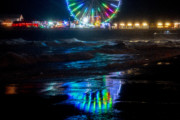
Tripping the Light Fantastic: Gueorgui Pinkhassov Photographs Blackpool Illuminations

Past Square Print Sale
Conditions of the Heart: on Empathy and Connection in Photography
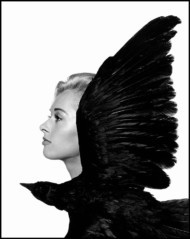
Tippi Hedren in Alfred Hitchcock’s movie “The Birds”. 1962.
Philippe halsman.

- Election 2024
- Entertainment
- Newsletters
- Photography
- Personal Finance
- AP Buyline Personal Finance
- Press Releases
- Israel-Hamas War
- Russia-Ukraine War
- Global elections
- Asia Pacific
- Latin America
- Middle East
- March Madness
- AP Top 25 Poll
- Movie reviews
- Book reviews
- Personal finance
- Financial Markets
- Business Highlights
- Financial wellness
- Artificial Intelligence
- Social Media
A warming island’s mice are breeding out of control and eating seabirds. An extermination is planned
This undated handout photo shows a mouse feeding on the head of a wandering albatross chick on Marion Island, South Africa. Mice that were brought by mistake to a remote island near Antarctica 200 years ago are breeding out of control because of climate change, eating seabirds and causing major harm in a special nature reserve with “unique biodiversity.” Now conservationists are planning a mass extermination using helicopters and hundreds of tons of rodent poison. (Stefan and Janine Schoombie via AP)
This undated handout photo shows a house mouse on Marion Island, South Africa. Mice that were brought by mistake to a remote island near Antarctica 200 years ago are breeding out of control because of climate change, eating seabirds and causing major harm in a special nature reserve with “unique biodiversity.” Now conservationists are planning a mass extermination using helicopters and hundreds of tons of rodent poison. (Stefan and Janine Schoombie via AP)
This undated photos shows two wandering albatrosses on Marion Island, part of the Prince Edwards Islands, a South African territory in the southern Indian Ocean near Antarctica. Mice that were brought by mistake to a remote island near Antarctica 200 years ago are breeding out of control because of climate change, eating seabirds and causing major harm in a special nature reserve with “unique biodiversity.” Now conservationists are planning a mass extermination using helicopters and hundreds of tons of rodent poison. (Anton Wolfaardt via AP)
This undated photo shows a research base on Marion Island, part of the Prince Edward Islands, a South African territory in the southern Indian Ocean near Antarctica. Mice that were brought by mistake to a remote island near Antarctica 200 years ago are breeding out of control because of climate change, eating seabirds and causing major harm in a special nature reserve with “unique biodiversity.” Now conservationists are planning a mass extermination using helicopters and hundreds of tons of rodent poison. (Anton Wolfaardt via AP)
This undated photo shows a wandering albatross and a chick on Marion Island, part of the Prince Edward Islands, a South African territory in the southern Indian Ocean near Antarctica. Mice that were brought by mistake to a remote island near Antarctica 200 years ago are breeding out of control because of climate change, eating seabirds and causing major harm in a special nature reserve with “unique biodiversity.” Now conservationists are planning a mass extermination using helicopters and hundreds of tons of rodent poison. (Anton Wolfaardt via AP)
This undated photo shows sooty albatrosses on Marion Island, part of the Port Edwards Islands, a South African territory in the southern Indian Ocean near Antarctica. Mice that were brought by mistake to a remote island near Antarctica 200 years ago are breeding out of control because of climate change, eating seabirds and causing major harm in a special nature reserve with “unique biodiversity.” Now conservationists are planning a mass extermination using helicopters and hundreds of tons of rodent poison. (Stefan Schoombie via AP)
- Copy Link copied
CAPE TOWN, South Africa (AP) — Mice accidentally introduced to a remote island near Antarctica 200 years ago are breeding out of control because of climate change, and they are eating seabirds and causing major harm in a special nature reserve with “unique biodiversity.”
Now conservationists are planning a mass extermination using helicopters and hundreds of tons of rodent poison, which needs to be dropped over every part of Marion Island’s 115 square miles (297 square kilometers) to ensure success.
If even one pregnant mouse survives, their prolific breeding ability means it may have all been for nothing.
The Mouse-Free Marion project — pest control on a grand scale — is seen as critical for the ecology of the uninhabited South African territory and the wider Southern Ocean. It would be the largest eradication of its kind if it succeeds.
This undated handout photo shows a house mouse on Marion Island, South Africa. (Stefan and Janine Schoombie via AP)
The island is home to globally significant populations of nearly 30 bird species and a rare undisturbed habitat for wandering albatrosses — with their 10-foot wingspan — and many others.
Undisturbed, at least, until stowaway house mice arrived on seal hunter ships in the early 1800s, introducing the island’s first mammal predators.
The past few decades have been the most significant for the damage the mice have caused, said Dr. Anton Wolfaardt, the Mouse-Free Marion project manager. He said their numbers have increased hugely, mainly due to rising temperatures from climate change, which has turned a cold, windswept island into a warmer, drier, more hospitable home.
“They are probably one of the most successful animals in the world. They’ve got to all sorts of places,” Wolfaardt said. But now on Marion Island, “their breeding season has been extended, and this has resulted in a massive increase in the densities of mice.”
Mice don’t need encouragement. They can reproduce from about 60 days old and females can have four or five litters a year, each with seven or eight babies.
Rough estimates indicate there are more than a million mice on Marion Island. They are feeding on invertebrates and, more and more, on seabirds — both chicks in their nests and adults.
This undated photo shows sooty albatrosses on Marion Island, part of the Port Edwards Islands, a South African territory in the southern Indian Ocean near Antarctica. (Stefan Schoombie via AP)
A single mouse will feed on a bird several times its size. Conservationists snapped a photo of one perched on the bloodied head of a wandering albatross chick.
The phenomenon of mice eating seabirds has been recorded on only a handful of the world’s islands.
The scale and frequency of mice preying on seabirds on Marion has risen alarmingly, Wolfaardt said, after the first reports of it in 2003. He said the birds have not developed the defense mechanisms to protect themselves against these unfamiliar predators and often sit there while mice nibble away at them. Sometimes multiple mice swarm over a bird.
Conservationists estimate that if nothing is done, 19 seabird species will disappear from the island in 50 to 100 years, he said.
“This incredibly important island as a haven for seabirds has a very tenuous future because of the impacts of mice,” Wolfaardt said.
The eradication project is a single shot at success, with not even a whisker of room for error. Burgeoning mice and rat populations have been problematic for other islands. South Georgia, in the southern Atlantic, was declared rodent-free in 2018 after an eradication, but that was a multi-year project; the one on Marion could be the biggest single intervention.
Wolfaardt said four to six helicopters will likely be used to drop up to 550 tons of rodenticide bait across the island. Pilots will be given exact flight lines and Wolfaardt’s team will be able to track the drop using GPS mapping.
The bait has been designed to not affect the soil or the island’s water sources. It shouldn’t harm the seabirds, who feed out at sea, and won’t have negative impacts for the environment, Wolfaardt said. Some animals will be affected at an individual level, but those species will recover.
“There’s no perfect solution in these kinds of things,” he said. “There is nothing that just zaps mice and nothing else.”
The eradication project is a partnership between BirdLife South Africa and the national Department of Forestry, Fisheries and the Environment, which designated Marion Island as a special nature reserve with the highest level of environmental protection. It has a weather and research station but is otherwise uninhabited and dedicated to conservation.
The department said the eradication of mice was “essential if the unique biodiversity of the island is to be preserved.”
Wolfaardt said the amount of planning needed means a likely go-ahead date in 2027. The project also needs to raise around $25 million — some of which has been funded by the South African government — and get final regulatory approvals from authorities.
Scientists have tried to control the mice of Marion in the past.
They were already a pest for researchers in the 1940s, so five domestic cats were introduced. By the 1970s, there were around 2,000 feral cats on the island, killing half a million seabirds per year. The cats were eliminated by introducing a feline flu virus and hunting down any survivors.
Islands are critical to conservation efforts, but fragile. The Island Conservation organization says they are “extinction epicenters” and 75% of all species that have gone extinct lived on islands. About 95% of those were bird species.
“This really is an ecological restoration project,” Wolfaardt said. “It’s one of those rare conservation opportunities where you solve once and for all a conservation threat.”
AP Africa news: https://apnews.com/hub/africa
Shooter Files by f.d. walker
Street Photography Tips, Interaction, Travel, Guides
Apr 24 2017
City Street Guides by f.d. walker: A Street Photography Guide to Moscow, Russia

*A series of guides on shooting Street Photography in cities around the world. Find the best spots to shoot, things to capture, street walks, street tips, safety concerns, and more for cities around the world. I have personally researched, explored and shot Street Photography in every city that I create a guide for. So you can be ready to capture the streets as soon as you step outside with your camera!
At over 12 million people, Moscow is the largest city in Russia and second largest in Europe by population ( Istanbul is #1). An urban, cosmopolitan metropolis with more than enough glitz and glam to cater to the elite, but without losing its fair share of Soviet era roughness around the edges. It can be fast paced, brash, busy, and trendy like other big cities, but it has its blend of West meets Russia atmosphere and beauty that provides plenty of unique interest. The Red Square is as famous as it gets, but there’s so much more to this city, including the most beautiful subway system you’ve ever seen. It would take years to capture all of Moscow, but that means you have an endless amount of areas to discover.

So here’s a Street Photography guide so you can be ready to capture all that Moscow has to offer before you even arrive!
- Patriarch’s Pond
- Old Arbat Street
- Maroseyka Street
- Tverskoy Boulevard
Top 5 Street Spots:
1. red square.
The Red Square is the most famous square in not just Russia, but all of Eastern Europe. The name actually doesn’t come from the color of the bricks or communism, but from the name in Russian, Krásnaya, once meaning “beautiful” before its meaning changed to “red.” This large plaza is what you see on the cover of guide books and magazines for Moscow, with St. Basil’s Cathedral being the center piece next to Lenin’s Mausoleum surrounded by the Kremlin Wall. Of course, the Red Square attracts hordes of tourist due to the main attractions, but all that activity around an interesting atmosphere does provide street photo opportunities. It’s also the central square connecting to the city’s major streets, providing a good starting point to explore outward.

You’ll also find the popular pedestrian only Nikolskaya Street connecting the Red Square to Lubyanka Square. This line of expensive shops includes plenty of activity, while also leading you to another popular square. Filled with history rivaling any city, the Red Square and surrounding areas are the heart and soul of Russia.

2. Patriarch’s Ponds
Patriarch’s Ponds is one of the most exclusive neighborhoods in Moscow. Despite the name being plural, there’s only one large pond, but it’s worth a visit with your camera. It’s a popular spot for locals and expats to come relax or take a stroll around the pond. You get an interesting mix of young and old too, from young love to “babushkas” feeding pigeons. It’s a very peaceful park atmosphere in one of the nicer areas within the city center, while bringing enough activity for street photography.

The pond is shallow and in the winter becomes a popular spot for ice-skating too. The area is also well-known for the location in the famous Russian novel, The Master and Margarita.
3. Old Arbat (Stary Arbat)
Old Arbat is the most famous pedestrian street in Moscow, and dating back to the 15th century, also one of its oldest. Originally, it was an area of trade, but soon became the most prestigious residential area in Moscow. During the 18th century, Arbat started attracting the city’s scholars and artists, including Alexander Pushkin. Cafes lined the streets and impressive homes filled the neighborhood. Since then, New Arbat street was created as a highway in the area, while Old Arbat was paved for a 1km pedestrian only walkway.

Due to the historic buildings, famous artists that lived here, and the bohemian atmosphere, Old Arbat has become a big attraction for tourists today. Now, there’s a mix of cafes, restaurants, souvenir shops, street performers, street merchants and other attractions for visitors, and some locals, to come enjoy. It can get really busy here and there’s usually something interesting going on so it’s a good street to come walk with your camera for guaranteed life.
4. Gorky Park
One of the most famous places in Moscow is Gorky Park. The official name is Maxim Gorky’s Central Park of Culture & Leisure, which gives you an idea of what goes on here. When built, it was the first of its kind in the Soviet Union. Divided into two parts, it stretches along Moscow River. One end contains fair rides, foods stands, tennis courts, a sports club, a lake for boat rides, and more. This end brings more active life due to its number of attractions, while the other end is more relaxed, where you’ll find gardens, trees, older buildings, and an outdoor amphitheater.

Gorky Park attracts mostly locals so it’s a good spot to capture the non-tourist side of Moscow life. Muscovites come here to escape the city and unwind in a picturesque setting. The park remains alive outside of the warmer months too, especially when the lake turns into the city’s largest outdoor skating rink. I’d recommend taking the metro out here to spend at least half a day exploring the massive park’s life with your camera.
5. Maroseyka Street
Maroseyka Street is a popular area not too far from the Red Square. The long, winding street turns into Pokrovka and is lined with restaurants, cafes, bars and places to stay. It’s actually where I like to stay when I’m in Moscow due to its location and solid street photography opportunities itself. You have Kitay-gorod station near and if you keep walking southwest, you’ll get to the Red Square. But if you walk northwest, as it changes to Pokrovka, you can find a long street of activity for photography with its own interesting atmosphere.

6. Tverskoy Boulevard
Tverskoy Boulevard is the oldest and longest boulevard in Moscow, beginning at the end of Nikitsky Boulevard, and finishing at Pushkin Square, a spot to come for activity itself. The boulevard is made up of two avenues, with pedestrian walkways in-between. You’ll find grass, shrubbery, trees, benches and more walking it’s almost kilometer length. Many people come here to enjoy some relaxation, walk their dog, or just to use it to walk wherever they’re going. Its center location also provides a nice place to walk with your camera near plenty of other spots you’ll want to check out anyway.
Sample Street Walk:
For a full day of Street Photography, covering some of the best spots, you can follow this sample street walk for Moscow:
- Start your morning walking around the Red Square (1), while exploring the surrounding area, including Nikolskaya Street
- Then walk northwest to Patriarch’s Ponds (2) and slowly walk the pond and surrounding area with your camera
- Next, walk east to the Pushkin Monument and stroll down Tverskoy Boulevard (6)
- Once Tverskoy Boulevard (6) ends, it will turn into Nikitsky Boulevard. Follow this down until you get to the start of Old Arbat Street (3), across from Arbatskaya station
- After you’re done walking down Old Arbat Street (3) for more street photography, spend some time checking out Moscow’s beautiful metro stations
- To finish off the day with more street photography, get off the metro near Red Square (1) again, Maroseyka Street (5) or wherever you’re staying for the night.

3 Things I’ll Remember about Shooting in Moscow:
1. museum metro.
The Moscow metro system was the first underground railway system in the Soviet Union and today includes 203 stations across 340km of routes. The elaborate system has some of the deepest stations in the world too, with escalators that seem to go on forever. None of this is what makes it so special, though. Many of its stations feel like stepping inside a museum, making it without a doubt the most interesting and beautiful metro system I’ve been in.

When built, Stalin wanted to make the metro stations “palaces for the people” with marble, chandeliers, and grand architecture. The best part is the variety of architecture and styles used, making many of the stations a completely different experience visually. You could easily spend a whole day traveling the stations and there are even tours available for people who wish to do just that. My advice, though, would be just to buy a ticket and hop on and off at different stations, while exploring different lines. The museum-like surrounding mixed with the crowds of characters can make for a great photography experience.

Since there are so many stations, here are some of my favorites to check out:
- Novoslobodskaya
- Mayakovskaya
- Elektrozavodskaya
- Komsomolskaya
- Ploschad Revolyutsii
- Dostoyevskaya
- Prospekt Mira

2. Moscow is Big
It’s no secret that Moscow is a big city, but it can feel even bigger with how spread out much of it is. This is especially true if you compare it to cities outside of Asia. If I compared it to cities in Europe, I’d probably say only Istanbul would warrant more time to really discover the depths of this city. Most only explore around the Red Square and surrounding area, but that is such a small part of the city. Although, that central area does give you plenty to see on its own.

Fortunately, I had a good friend living in the city to show me around, but it opened up my eyes even more to how much there is to discover in Moscow. It’s a big city with a variety of atmosphere that can take you from “east” to “west” and trendy to rugged depending on where you go. I’d imagine you’d have to live here a while to really know the city.
3. Cosmopolitan Mix of East meets West
Modern skyscrapers mixed with amazing architecture, a world-class metro system with museum-like beauty, trendy fashion and chic clubs, Moscow is a rich mix of Russian culture and history in a more western cosmopolitan package. There is a push to keep the Russian culture, while also pushing forward with a modern metropolis the whole world will envy. This comes with an impressive skyline, that continues to grow, and endless modernities, but with soviet nostalgia and atmosphere mixed in for good measure.

Mixed in with this grand western cosmopolitan atmosphere, is a strong national pride in Russia. This includes their famous leader, Vladimir Putin. Maybe no other place will you see a country’s leader more often. All over, from the pricey tourist shops to the underground walkway stalls, you’ll find goods with Putin’s likeness covering them. From t-shirts to magnets to Matryoshka dolls. There’s a strong national pride that can be seen around the city, which also extends to their leader. Moscow is many things. It’s East meets West, modernizations meets Soviet era, and a whole lot more.
What To Do For a Street Photography Break?:
Eat at a stolovaya.
Stolovayas are Russian cafeterias that became popular in the Soviet days. You grab a tray and walk down the line of freshly prepared local dishes, and select whatever you want from the chefs. They’re usually inexpensive and a much better value than restaurants, while giving you the opportunity to try from a wide selection of everyday Russian food. They’re also very tasty. I always include some borsch on my tray and go from there. The places themselves are all over Moscow and usually come with Soviet-era aesthetics to complete the experience.

Street Safety Score: 7
*As always, no place is completely safe! So when I talk about safety, I’m speaking in general comparison to other places. Always take precaution, be smart, observe your surroundings and trust your instincts anywhere you go!
Being the 2nd largest city in Europe with over 12 million people, you’re going to have your dangerous areas, but for the most part, it feels safe walking around. Russia is statistically higher in crime compared to most of Europe, but this generally doesn’t apply to tourists and visitors. Around the Red Square and surrounding city center, you should feel completely safe walking around. Pick pocketing can happen, but no more than other touristic places. I always explore Moscow freely without coming across too much to worry about. It’s a spread out city, though, so of course it matters where you are. Just use basic street smarts, know where you are and Moscow shouldn’t give you a problem.

People’s Reaction Score: 7
Moscow is fast paced, big city life, which usually means people aren’t too concerned with you, or your camera. I don’t find people notice or pay much attention to me when I’m out taking photos in Moscow. For the most part, people just go about their day. You shouldn’t get too many looks or concern. But it can depend on the area you are in. The more you stick out, the more you might get noticed with suspicions. I’ve never had any problems in Moscow, or Russia, but just be careful who you’re taking a photo of if you get out of the city center. Other than that, it’s about average for reactions.

Street Tips:
Learn the alphabet .
Much of Moscow, including the metro system, doesn’t use english. The Russian alphabet uses letters from the Cyrillic script, which if you aren’t familiar with it and don’t know the sounds, can be hard to decipher the words. This is most important for street names and metro stops when trying to get around. It can save confusion and make it easier getting around if you learn the basic alphabet. At the very least then, you can sound out the words to see which are similar in the english conversion, which can help matching them to maps. When out shooting street photography, getting around is as important as anything. So save yourself some time and frustration by learning the Russian Alphabet.

Use the metro
While Saint-Petersburg feels very walkable for a city its size, Moscow can feel very spread out, even for its bigger size. Outside of the Red Square area, you can have plenty of walking before getting anywhere very interesting, so you’ll need to take the metro a lot if you really want to explore the city. Maps are deceiving here too, it will always be further than it looks.

Another reason it’s less walkable than Saint-Petersburg is its completely different set-up. Moscow’s streets are mostly contstructed in rings with narrow, winding streets in-between. This is common with medieval city cities that used to be confined by walls, but you usually don’t have it in a city this massive. Saint-Petersburg has a more grid-like pattern that also uses the canals to help you know your way around. When it comes to navigating on foot in Moscow, it can be more difficult, so bring a map and take the metro when needed. It’s why Moscow’s metro carries more passengers per day than the London and Paris subways combined.
Explore other areas if you have time
Moscow is really big. While most people stay around the Red Square within the Boulevard Ring, there’s so much more to the city. I covered some other spots outside of this circle, but if you really want to see the city, you’ll need time. If you do have time, some other areas I’d check out first are Zamoskvarechye, along some of the south and western Moscow.

Inspiration:
For some more inspiration, you can look through the Street Photography of Moscow photographer Artem Zhitenev and check out 33 of my photos taken in Moscow .
Conclusion:
Moscow’s name brings a certain mystique, but once you’re there it might bring a different atmosphere than you expect. It’s big and sprawling, but beautiful in many ways. It can feel like a European capital on a grand scale, but you can definitely find its Russian side in there.

The urban sprawl of Moscow can be intimidating, but give it enough time and you’ll be rewarded with plenty to discover. All with the world’s best metro system to take you around.
I hope this guide can help you start to experience some of what Moscow contains. So grab your camera and capture all that Moscow has to offer for Street Photography!
If you still have any questions about shooting in Moscow, feel free to comment below or email me!
(I want to make these guides as valuable as possible for all of you so add any ideas on improvements, including addition requests, in the comment section!)
Click Here For More City Street Guides!
(A New Guide Posted Every Other Wednesday)

Comment Here! Cancel reply
For patreon exclusive educational content:.

Limited Edition Postcard Prints!
Street Photography Workshops
Donations Always Appreciated
I'll always keep Shooter Files free for everyone, but any donations would be greatly appreciated and help me keep it going. Many thanks to everyone following along!
Cheers! -f.d. walker
Search the Files

For Exclusive Patron Content:

IMAGES
VIDEO
COMMENTS
"The bird which made the breeze to blow," the Wandering Albatross has the longest wingspan of any bird on the planet.
About — Wandering Albatross Photography. Hi there. Nice to meet you! I'm Ginny. I first held a camera in my hands in high school. I've been obsessed with telling stories through that lens ever since. I love working with people (that's you).
A: The prices you see are a reflection not only of the time and hard work I put in during your photo session, but also the hours I invest in editing and Fine-Tuning your images. Just as photographers used to spend hours perfecting images in a darkroom, I meticulously edit and refine each image to vividly and elegantly tell your story.
Ginny Emery is a photographer based in Helena, Montana. With over a decade of professional photography experience, Ginny is well-versed in many types of photography including weddings, events, portraiture, marketing and journalism. Photo by Skye Hatten
Wandering Albatross Photography, Helena, Montana. 549 likes · 13 talking about this. Professional Photography
In literature, albatrosses represent weighty, inescapable burdens. But in real life, the huge seabirds use wind energy to cruise around the planet's oceans. Photographer Frans Lanting and writer ...
On his first-ever trip to South Georgia, Benn Berkeley—Expedition Filmmaker and one of Silversea's Onboard Photographers—came eye-to-eye with the proud owner...
1/2000th second is a good place to start. Use a continuous auto-focus mode to track the bird, and aim to focus on the eyes. Select your 'zone' for a nice composition before you begin shooting. Look at where the birds are flying, and establish an area where the background is pleasing and the light is good.
"It's virtually impossible to appreciate the enormity of a Wandering Albatross's wingspan until you see it in person, up-close." On his first-ever trip to South Georgia, Benn Berkeley—a talented Expedition Filmmaker and one of Silversea's Onboard Photographers—came eye-to-eye with the proud owner of the animal kingdom's largest wingspan.
758 Followers, 1,276 Following, 271 Posts - See Instagram photos and videos from Ginny Emery (@wanderingalbatrossphotography)
Photographer and amatuer Filmmaker. Lover of the wild and Animals. Currently residing in Johannesburg, South Africa looking for the next adventure for the list. I am currently studying Film and Production, interested to do some work with people.
Families. Couples. Seniors. Amazing Humans. View fullsize. View fullsize
Woods Hole, Mass. — Wandering albatrosses, which are an iconic sight in the Southern Ocean, are highly adapted to long-distance soaring flight. Their wingspan of up to 11 feet is the largest known of any living bird, and yet wandering albatrosses fly while hardly flapping their wings.
The wandering albatross, snowy albatross, white-winged albatross or goonie (Diomedea exulans) is a large seabird from the family Diomedeidae, which has a circumpolar range in the Southern Ocean. It was the last species of albatross to be described, and was long considered the same species as the Tristan albatross and the Antipodean albatross.
Destinations: Bouvet Island, Antarctic Peninsula, South Georgia. Name: Wandering Albatross, Snowy Albatross, White-winged Albatross ( Diomedea exulans) Length: Up to 135 cm. Weight: 6 to 12kg. Location: All oceans except in the North Atlantic. Conservation status: Vulnerable.
The wandering albatross is undoubtedly one of the most striking birds on the planet. Unfortunately, it is one of the most vulnerable species and is listed as "endangered" under the IUCN Red List, meaning it is at risk of extinction.The wandering albatross faces numerous threats to its population, including climate change, habitat loss, and human activities such as fishing, pollution, and ...
Bio. I, Gene Oryx, a professional photographer from Moscow city, Russia. In 2016 and 2017 he received silver medals at the annual international competition Photoshoot Awards in Montreal. On the contest, and in 2019 - two bronze medals. In the 35 Awards 2017 was among the top 100 photographers of the year.... see more about geneoryx. Member ...
Open Menu Close Menu. Work About
375USD. 90 Minute Photoshoot. with a Professional Photographer. Private Online Gallery. with All the Best Shots. 45 Digital Photos Included. Beautifully Edited & High-Res. Inquire Now.
In 2017, to mark the collective's 70 th anniversary, Magnum Photos organised its first Live Lab: a now-ongoing series of projects in which photographers are set lose in a given location to create new work responding to the locality. The work they make is then edited, curated, and exhibited in situ. The July 2019 iteration of the Live Lab saw three photographers with renowned - and uterly ...
1 of 6 | . This undated handout photo shows a mouse feeding on the head of a wandering albatross chick on Marion Island, South Africa. Mice that were brought by mistake to a remote island near Antarctica 200 years ago are breeding out of control because of climate change, eating seabirds and causing major harm in a special nature reserve with "unique biodiversity."
Fly message, fly! (Thanks for reaching out, I'll be in touch soon.) About Contact Follow Contact Follow
Wandering around the Moscow city center. New Arbat Ave, Old Arbat, Vozdvizhenka Street. Summer in Russia. June 13, 2022Support Channel BinanceID 436130624USD...
*A series of guides on shooting Street Photography in cities around the world. Find the best spots to shoot, things to capture, street walks, street tips, safety concerns, and more for cities around the world. I have personally researched, explored and shot Street Photography in every city that I create a guide for.